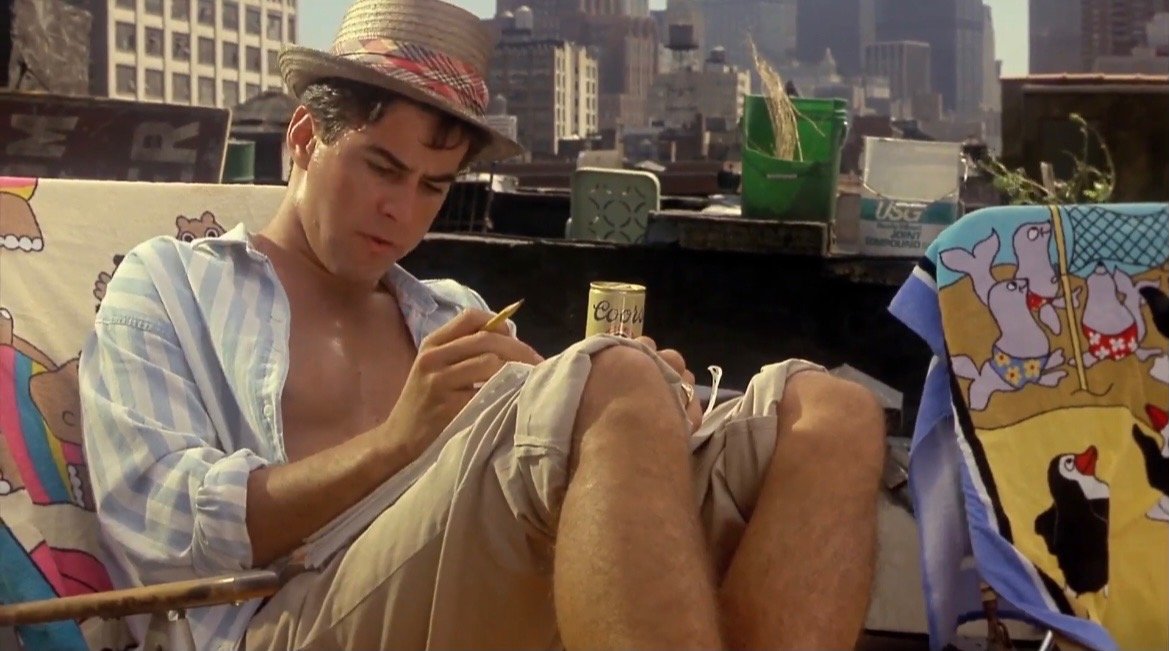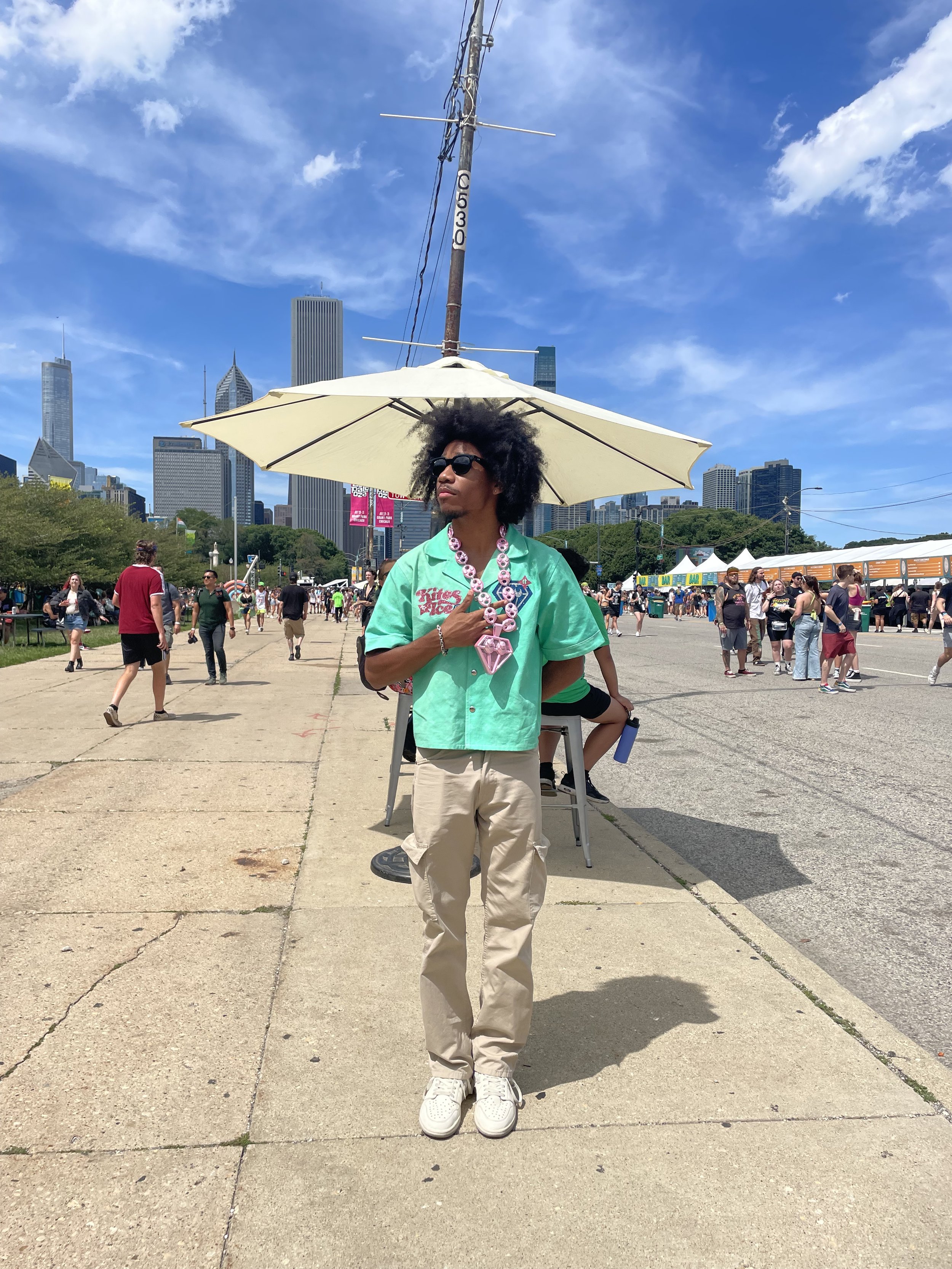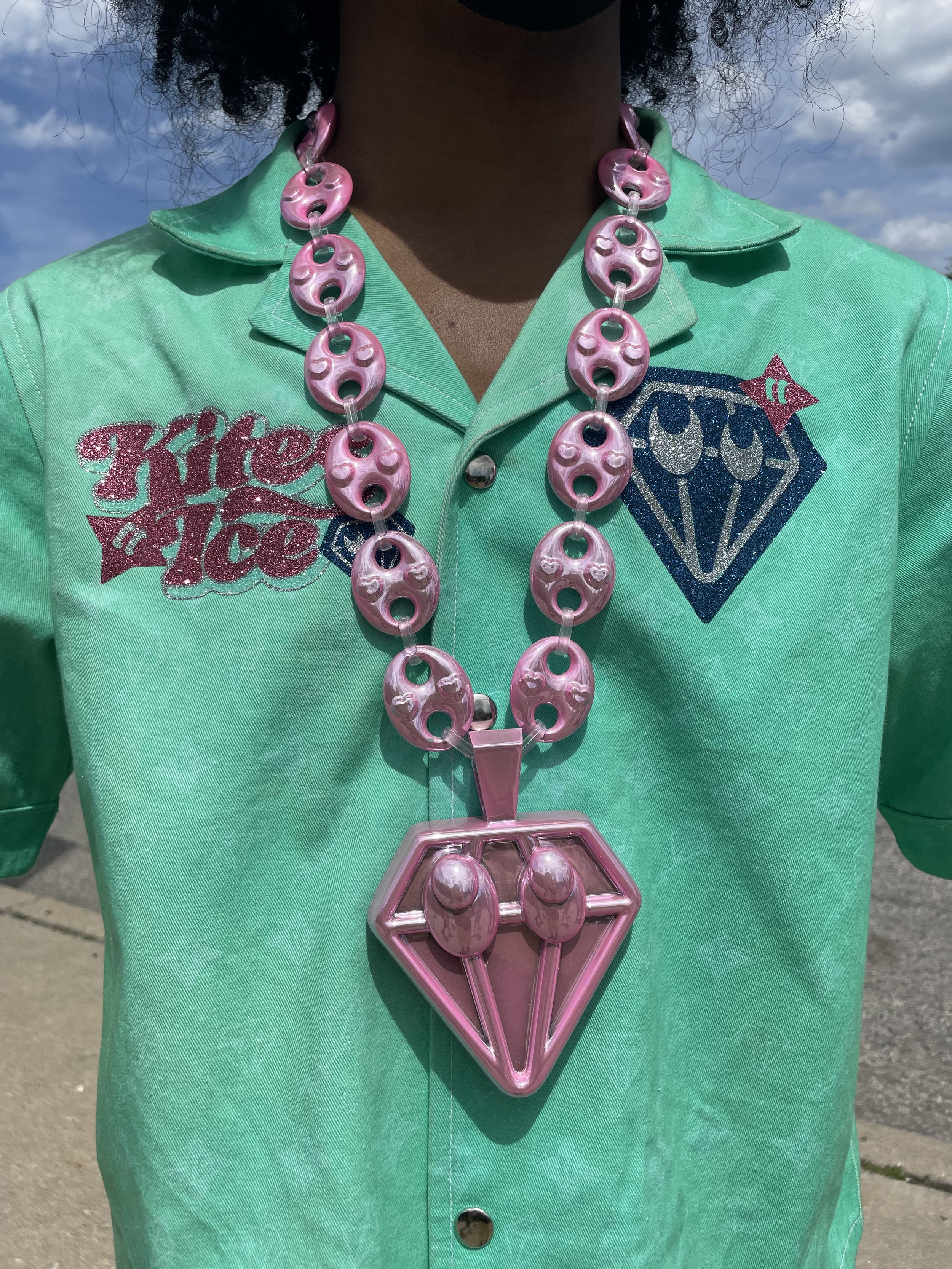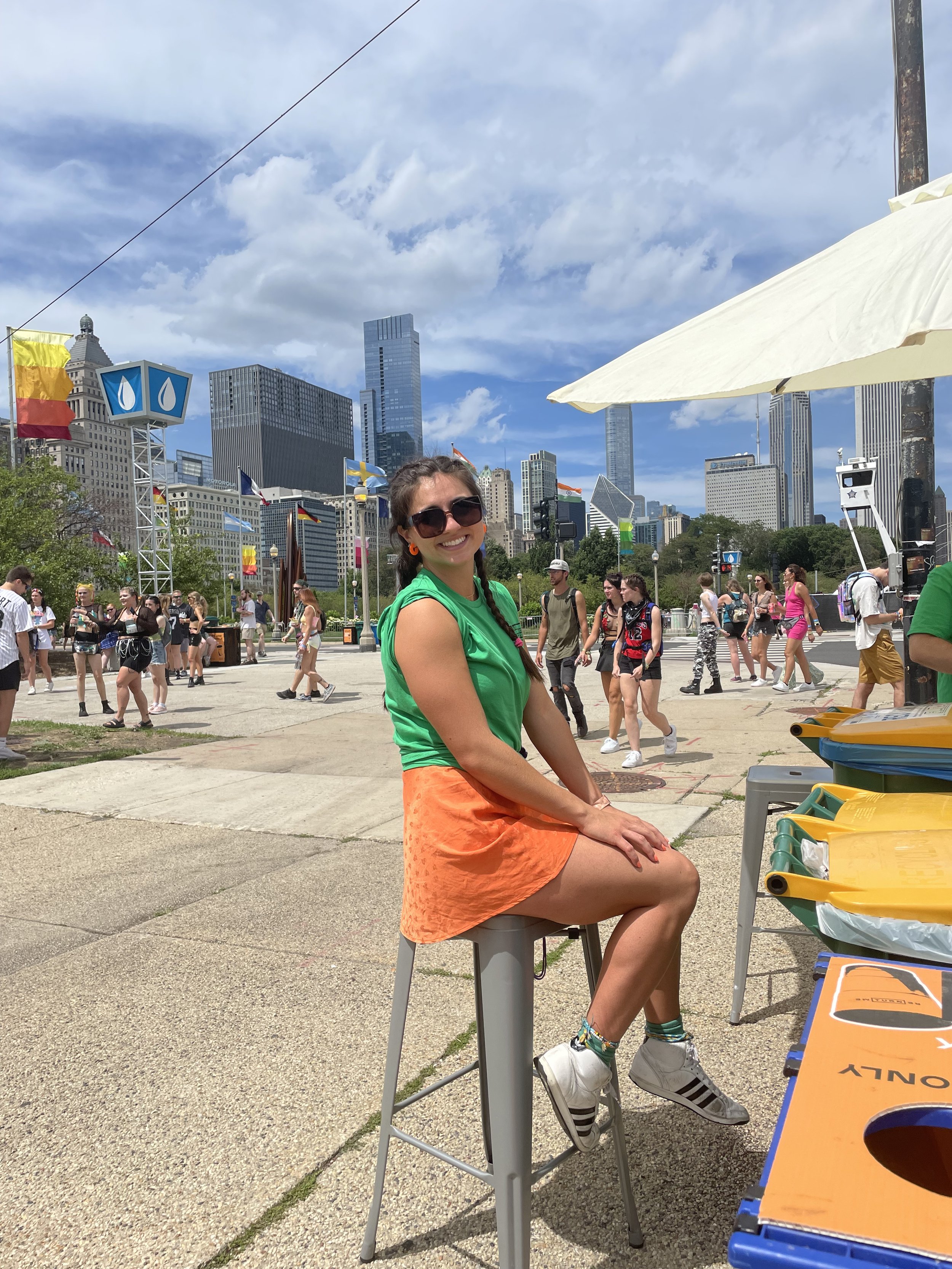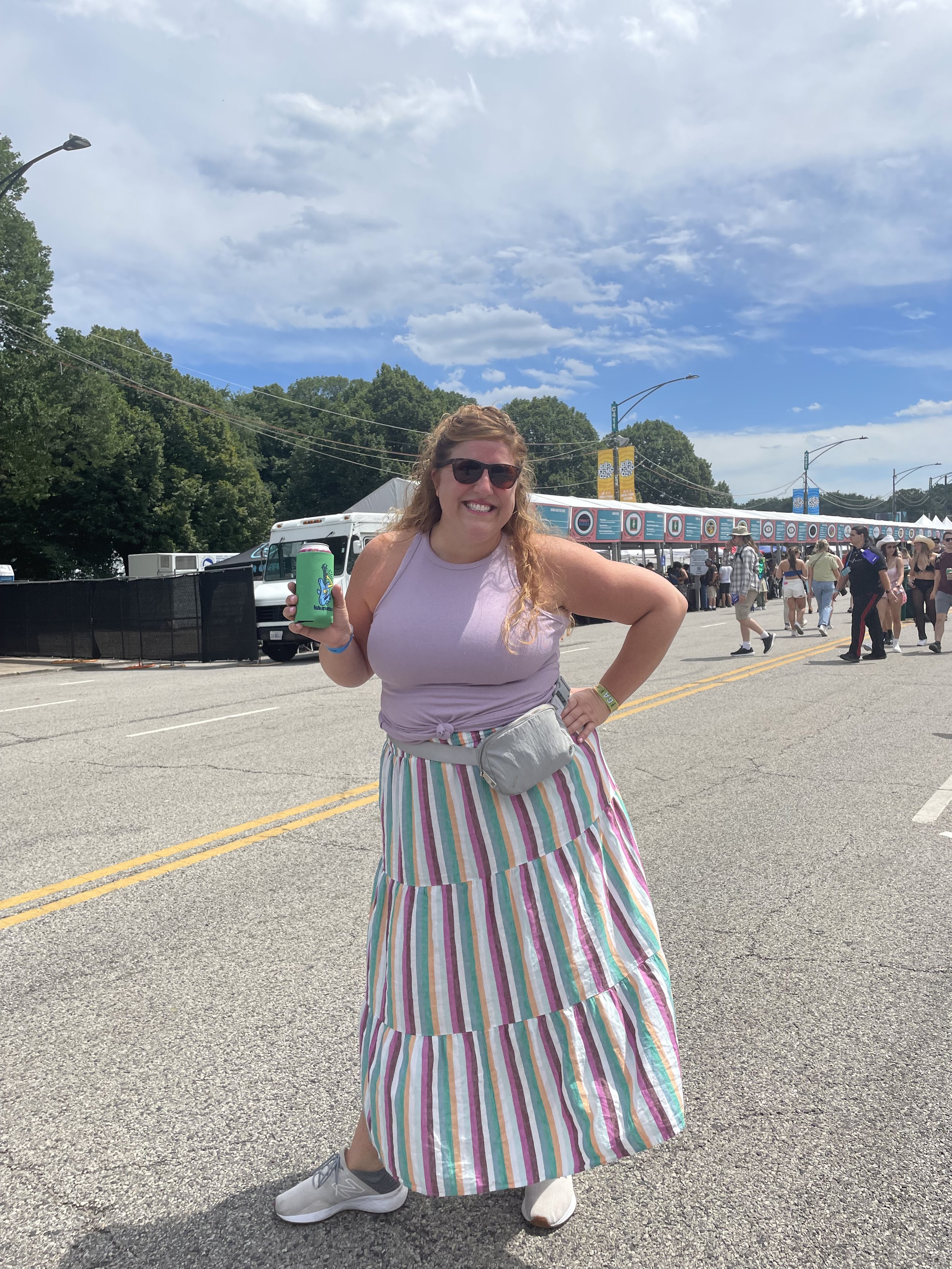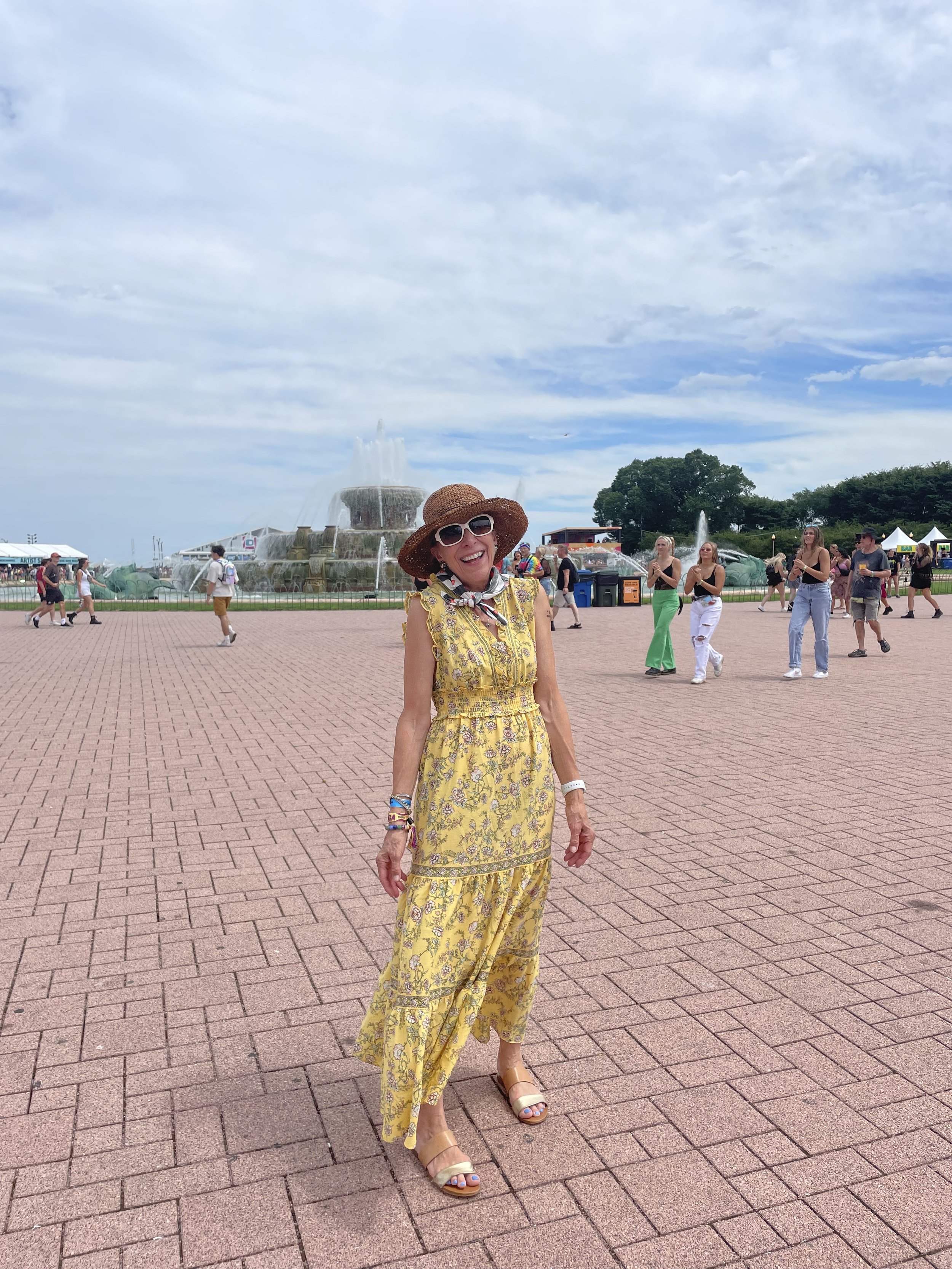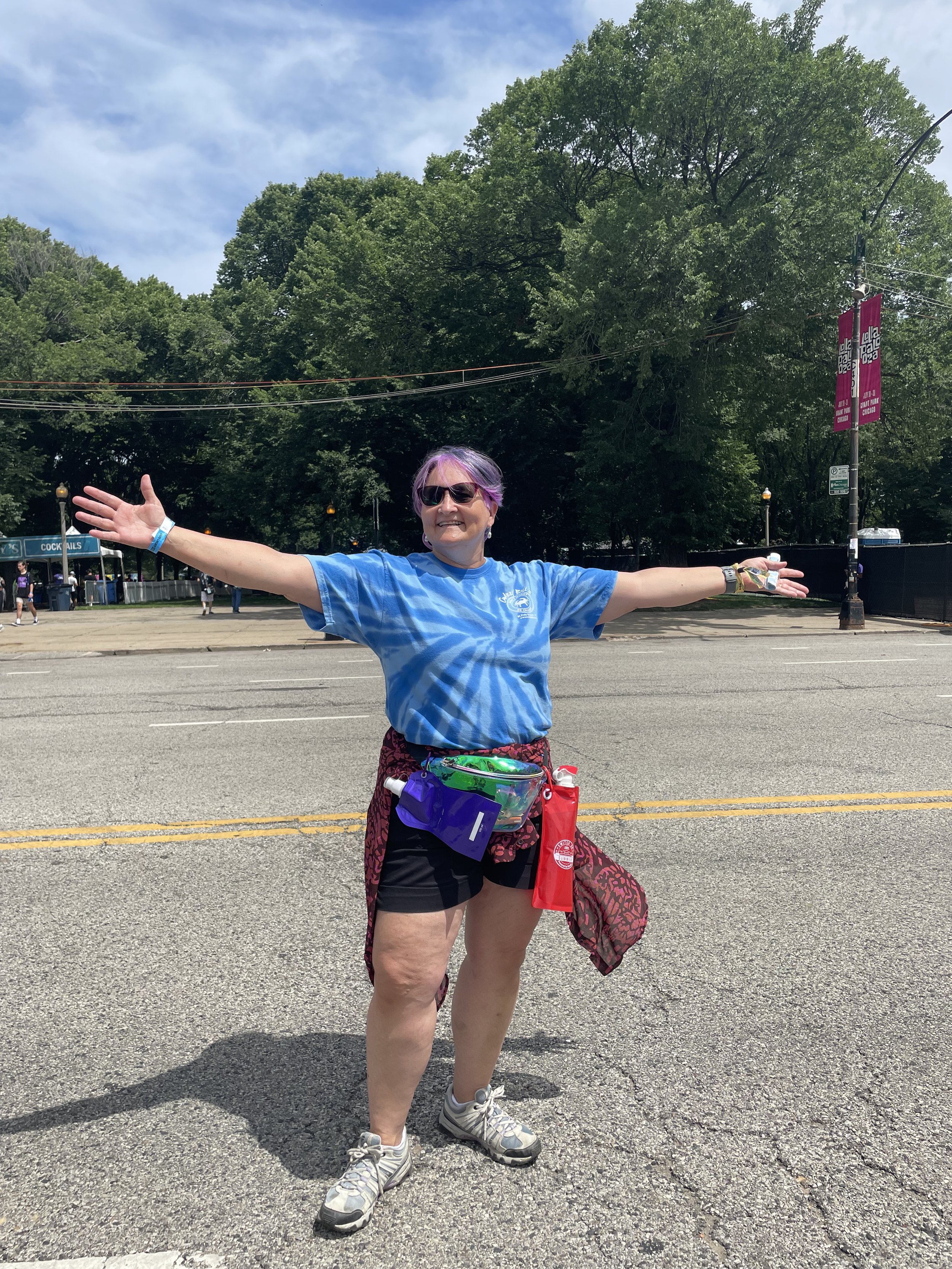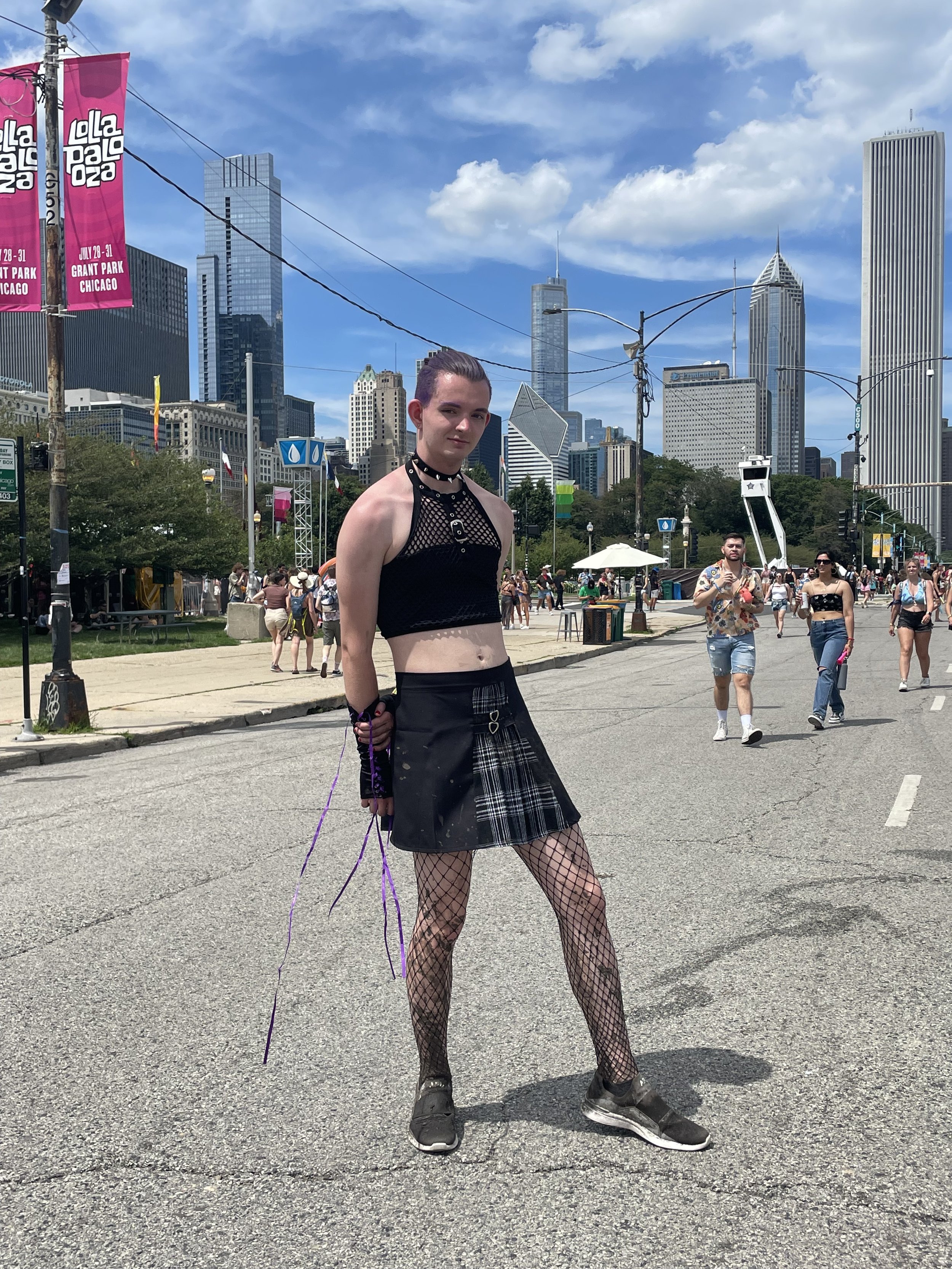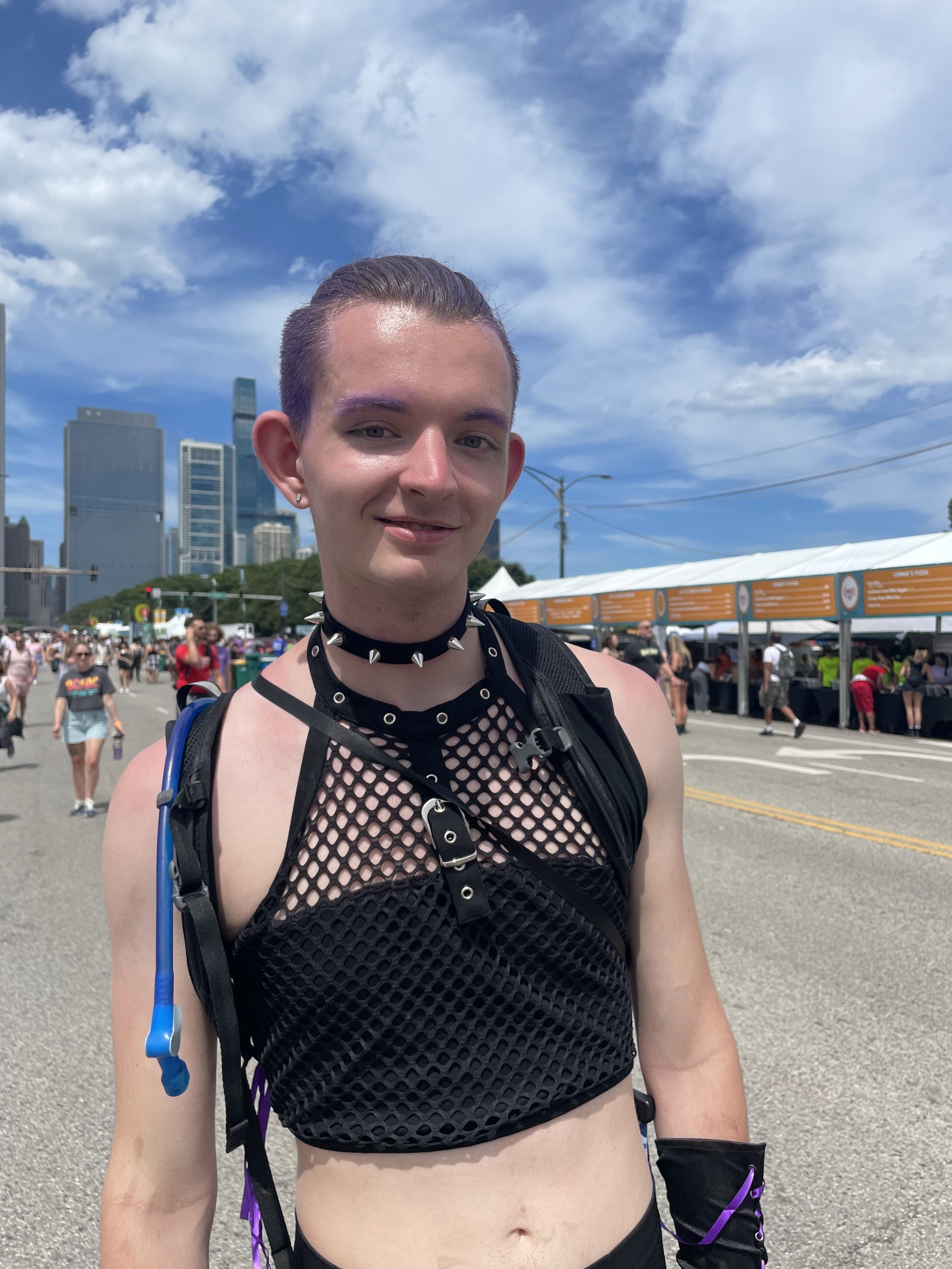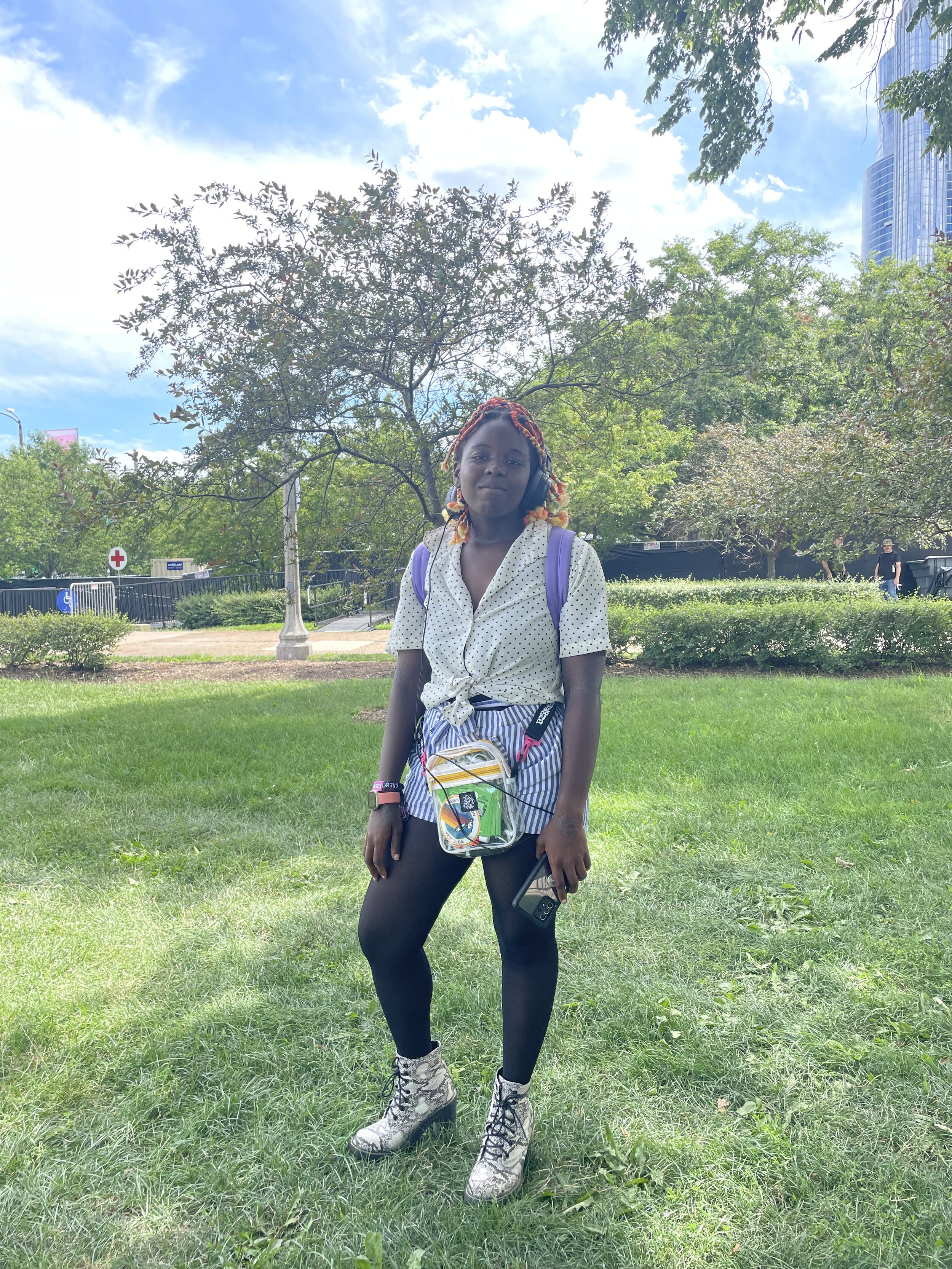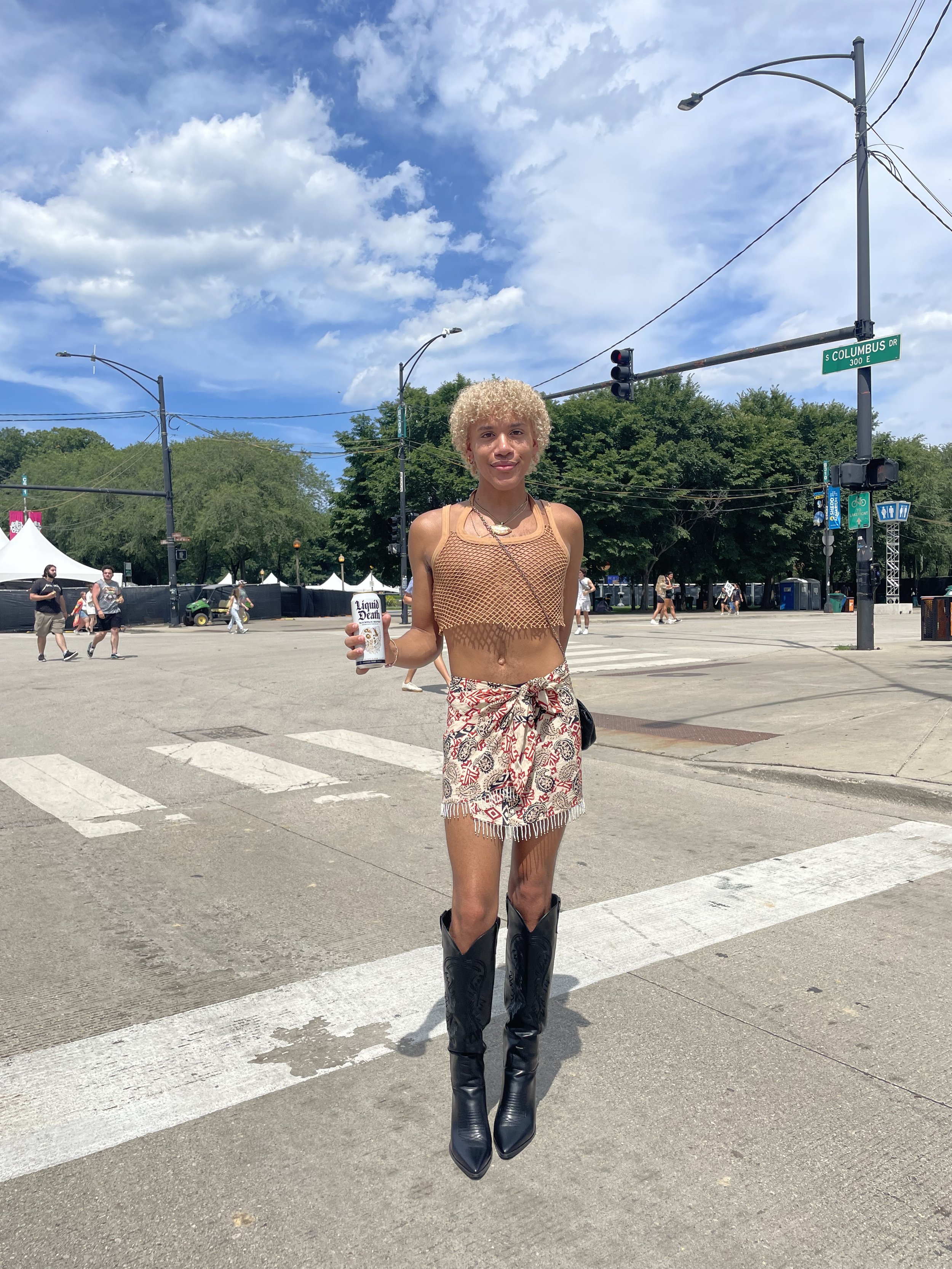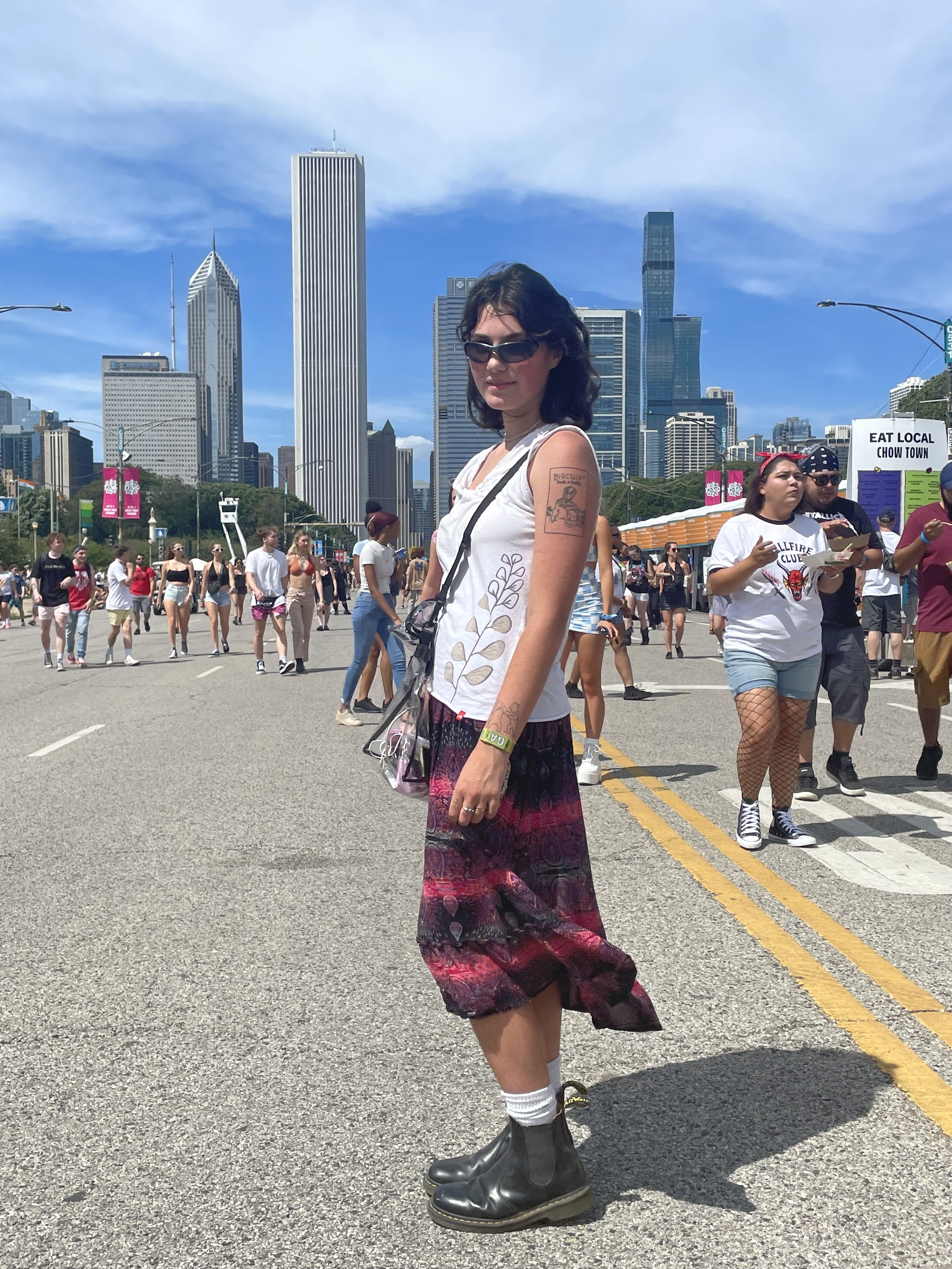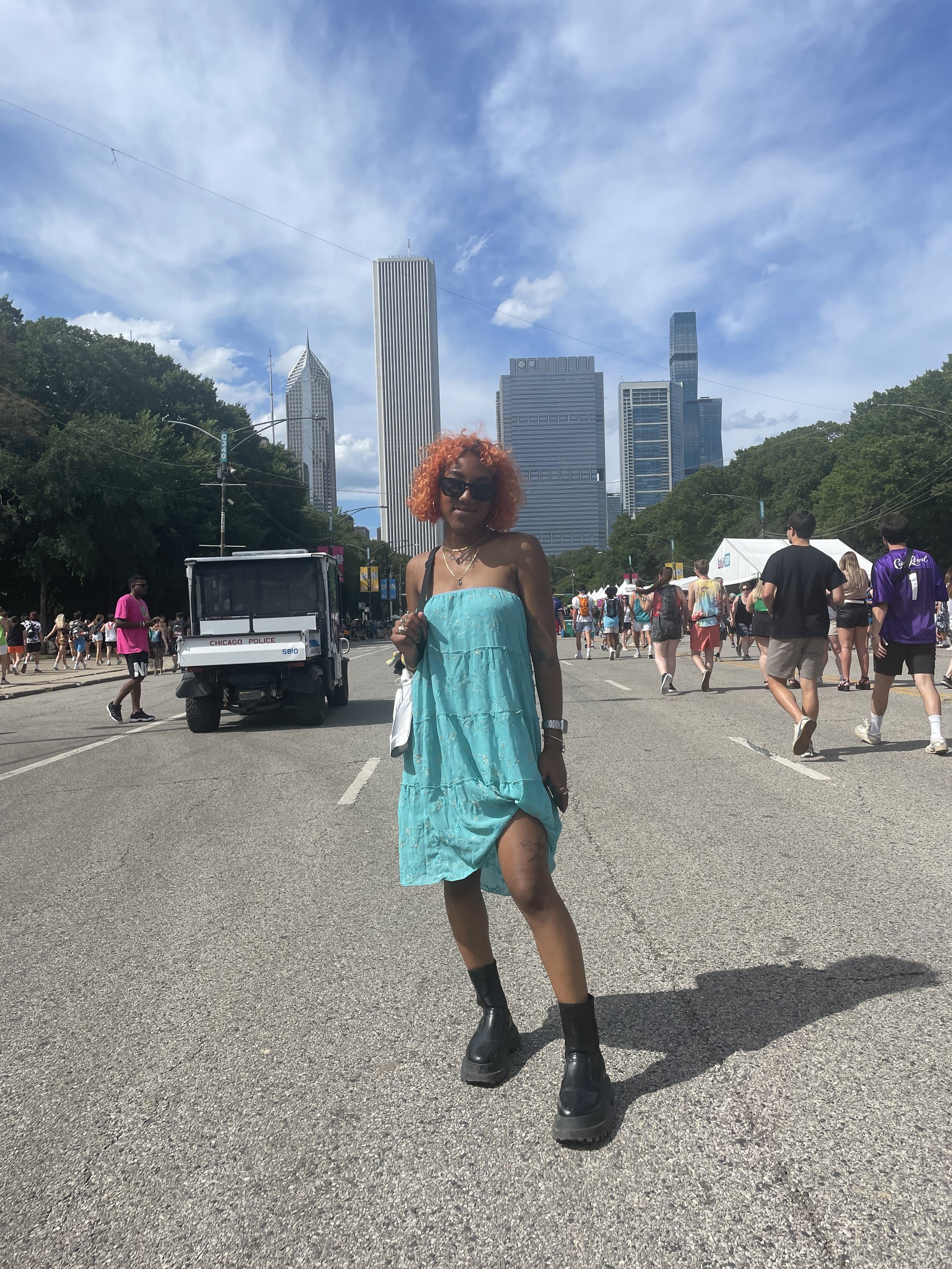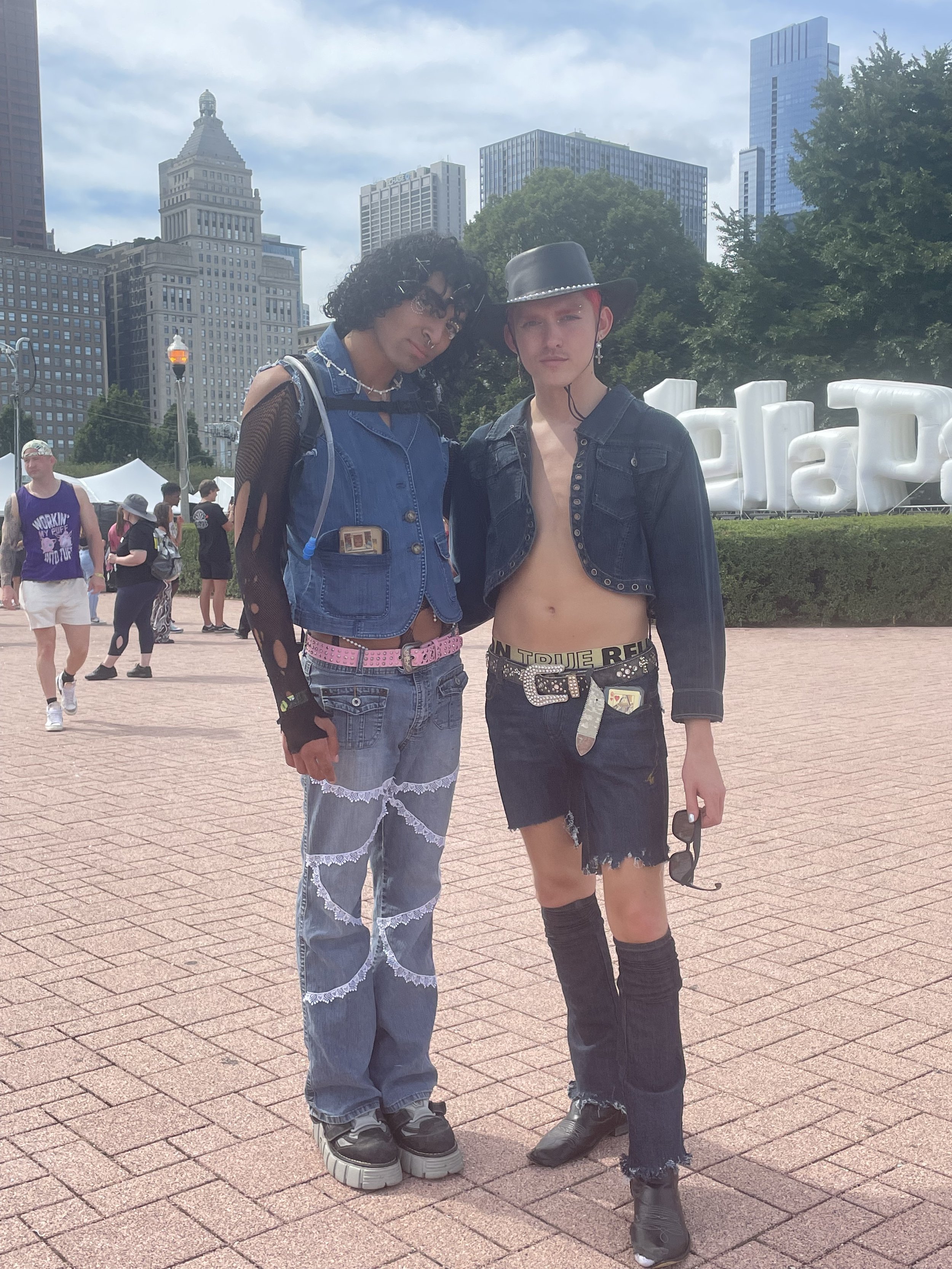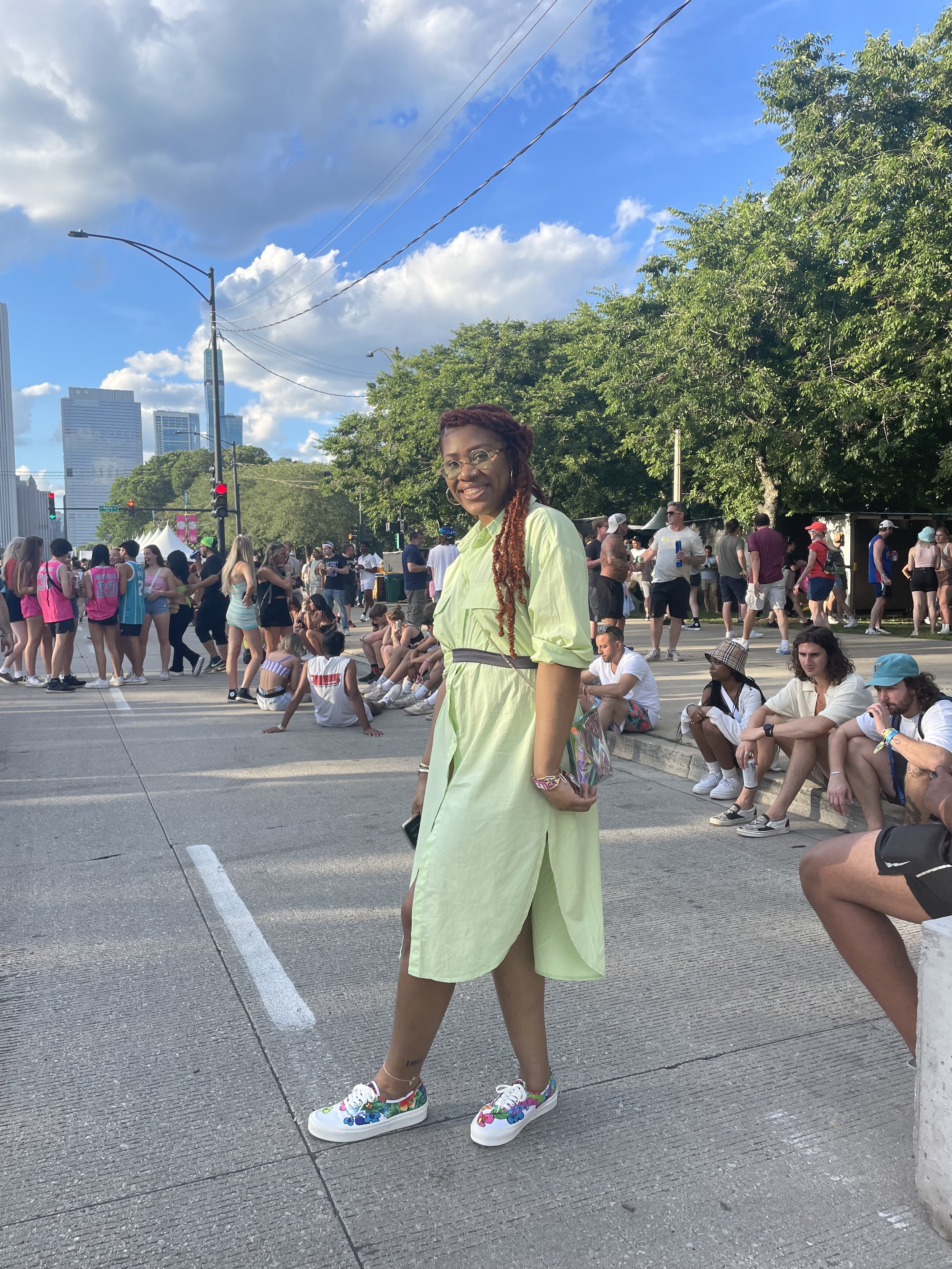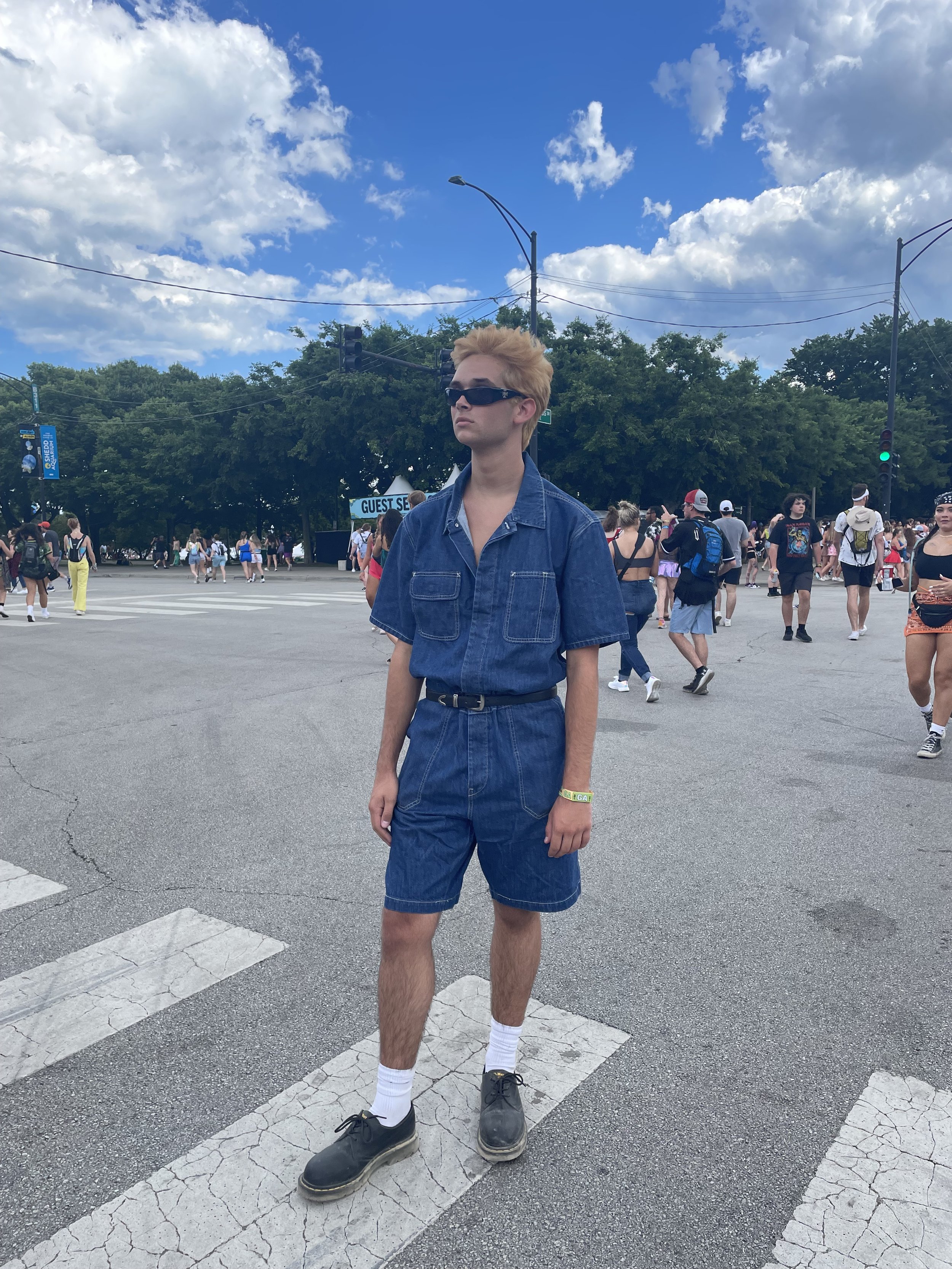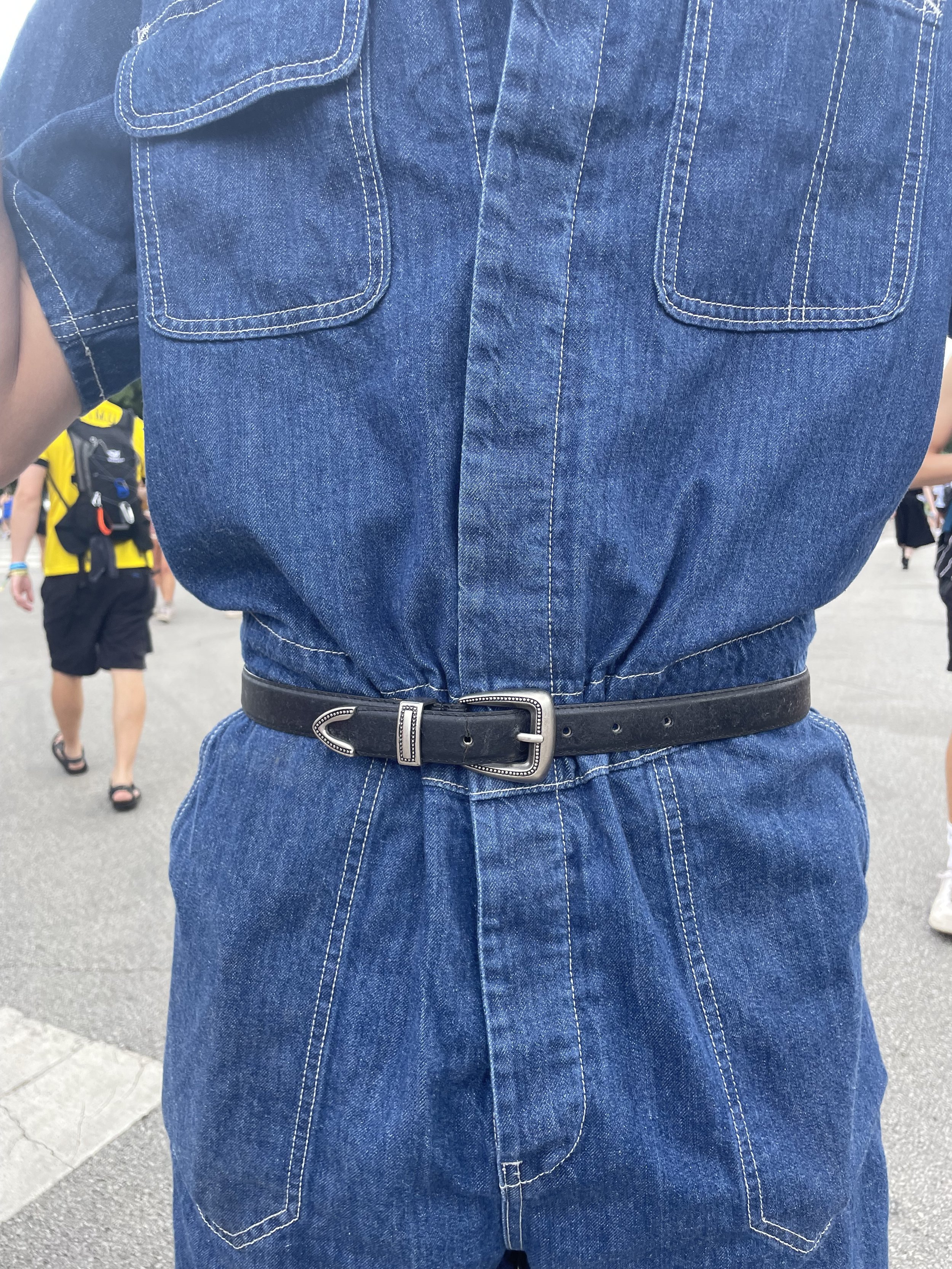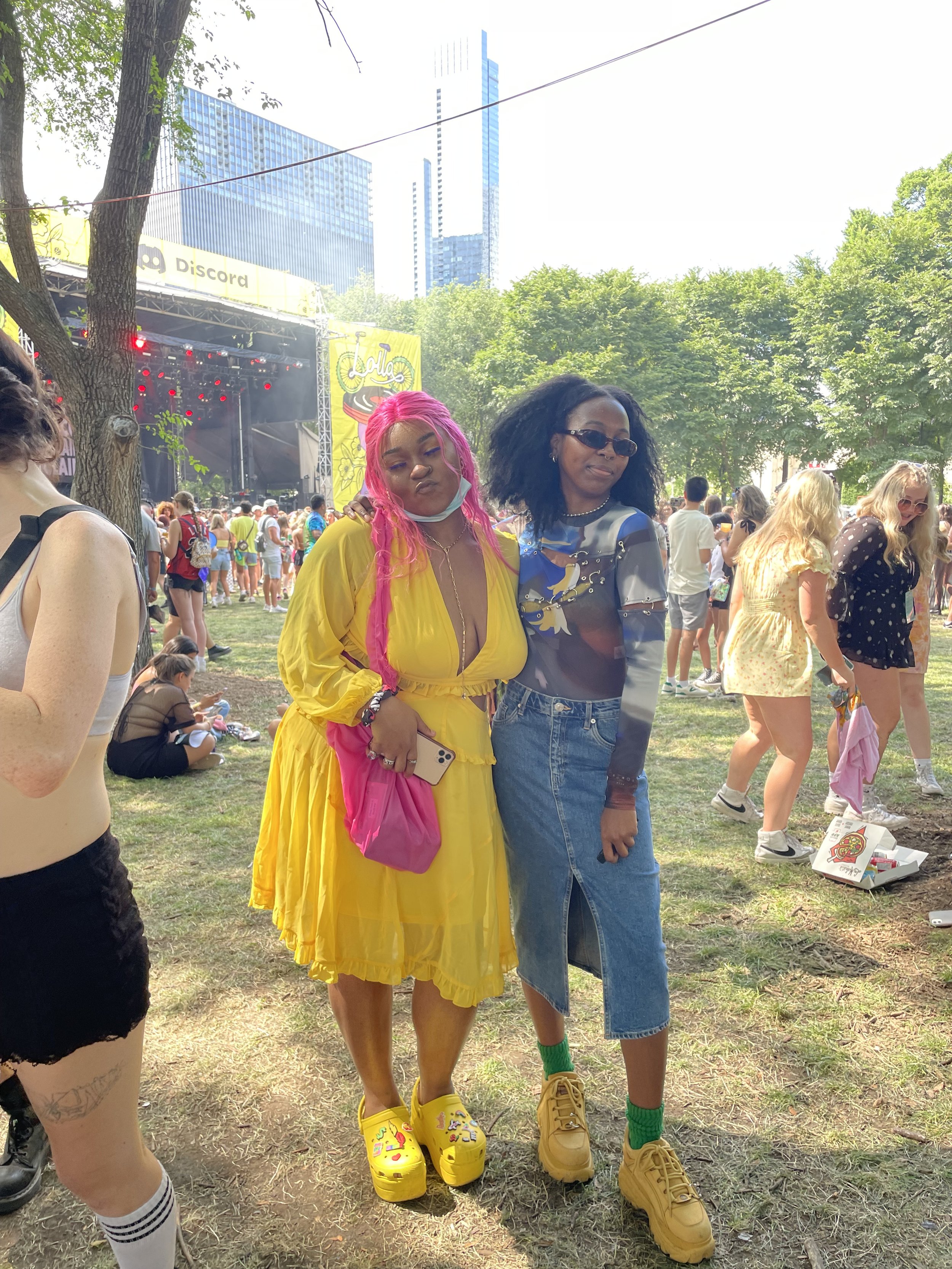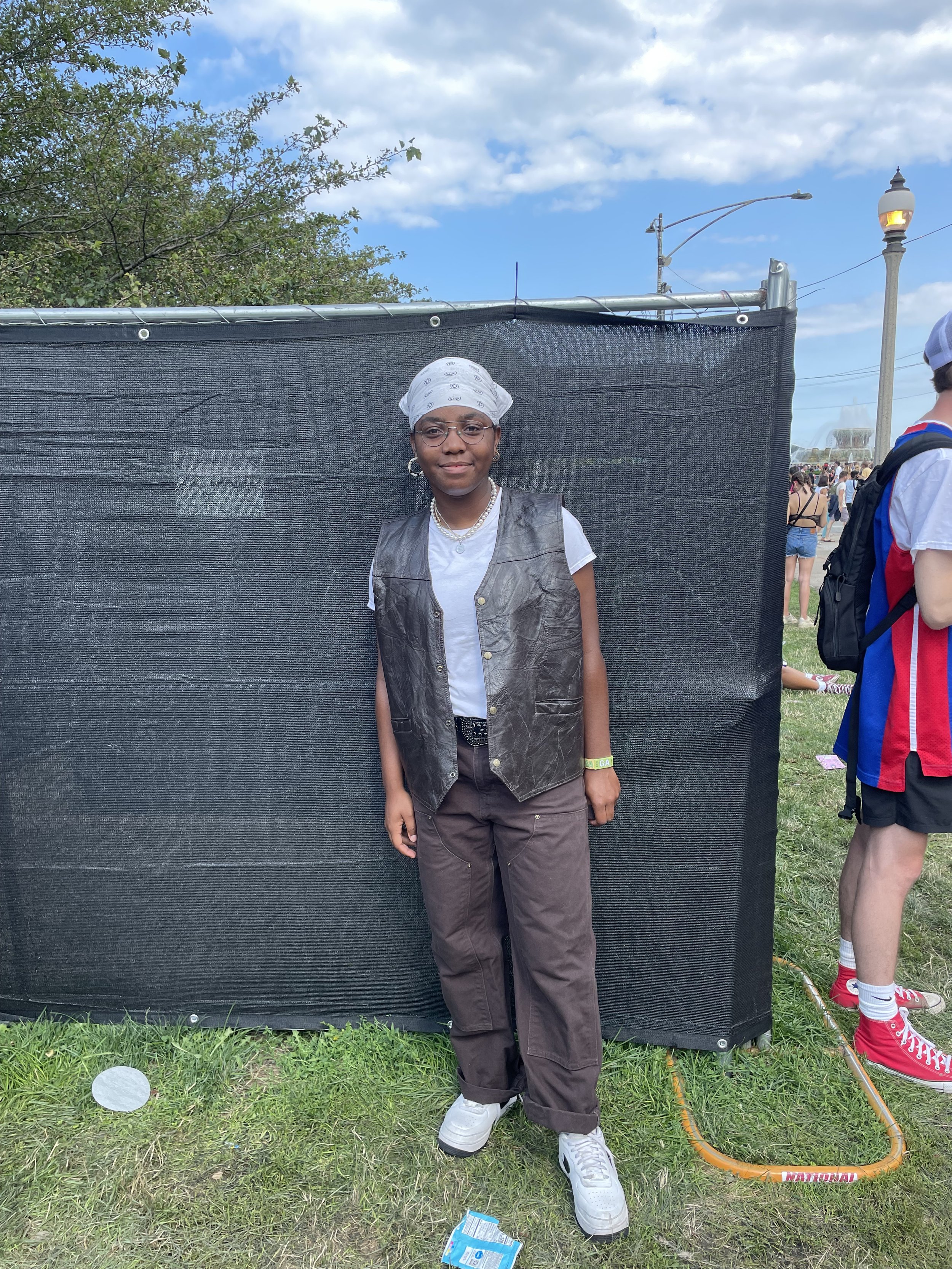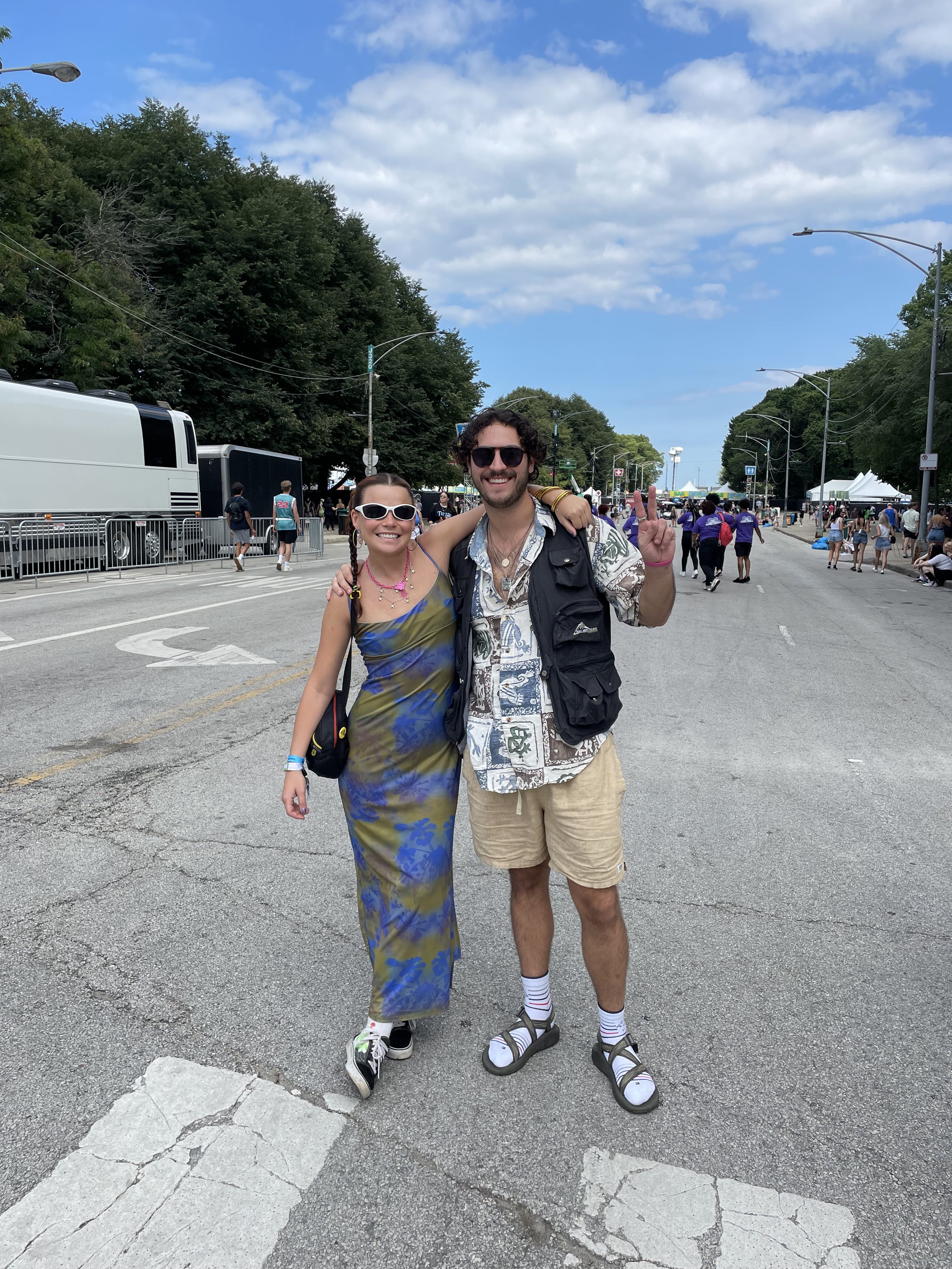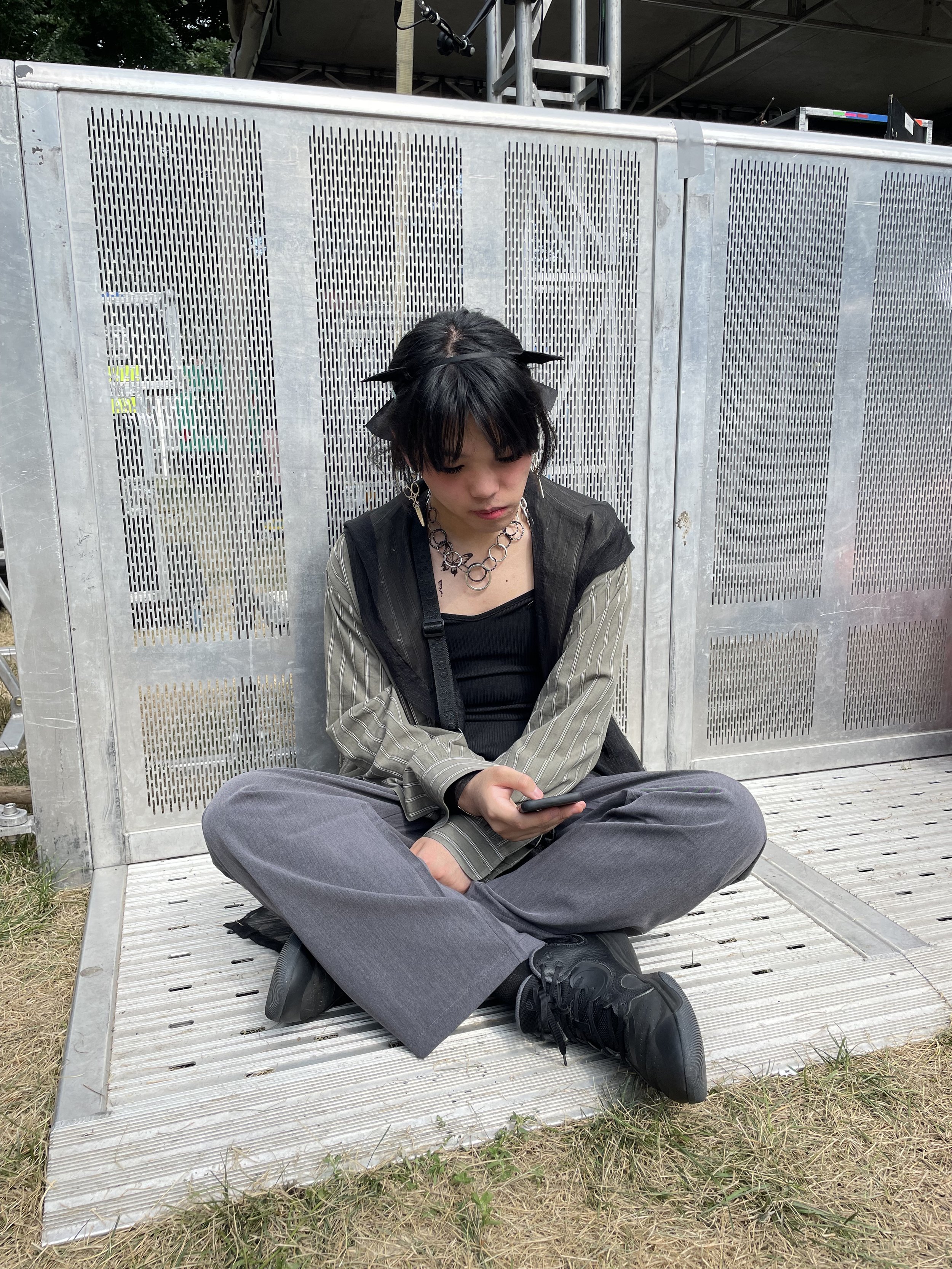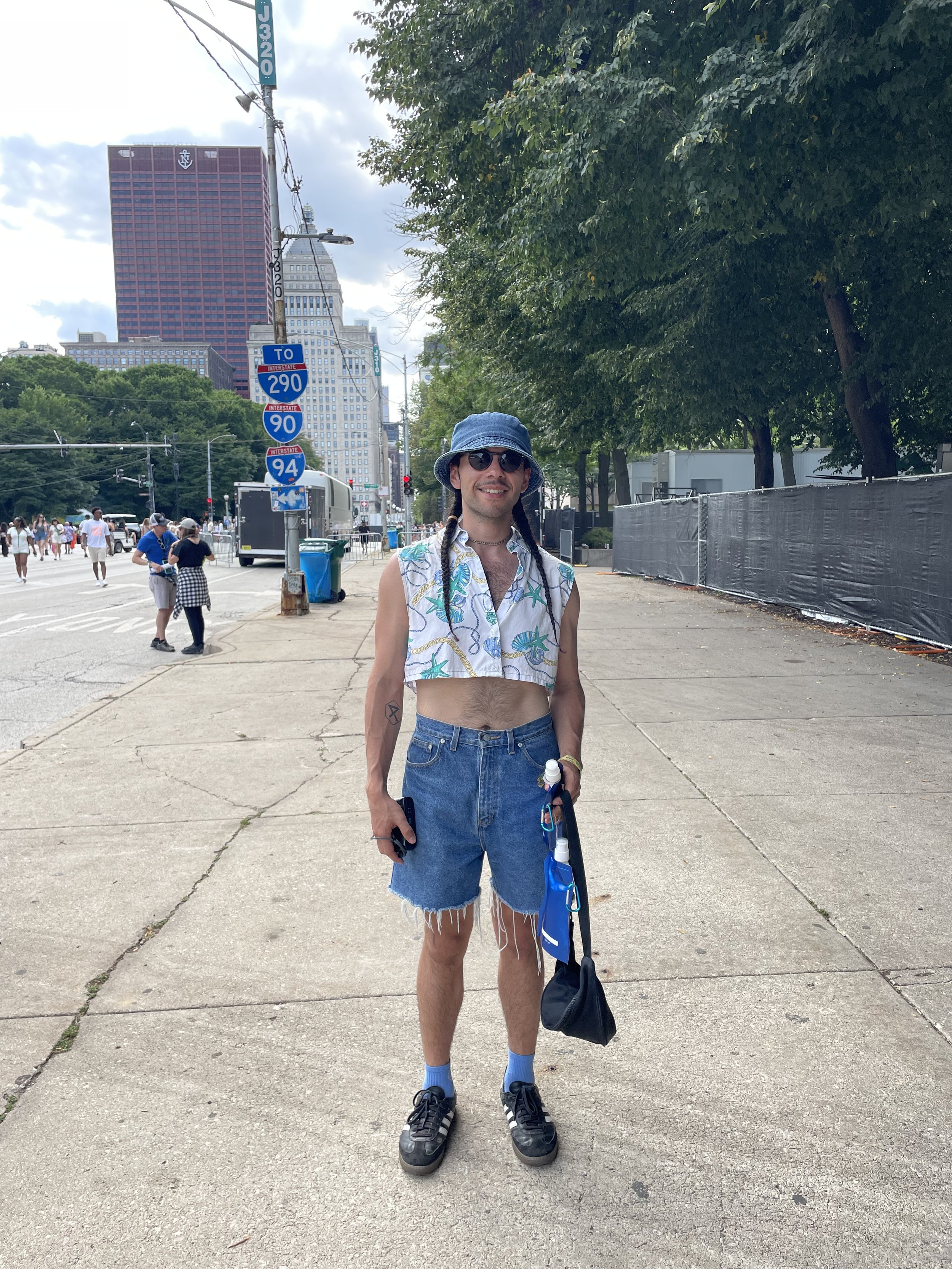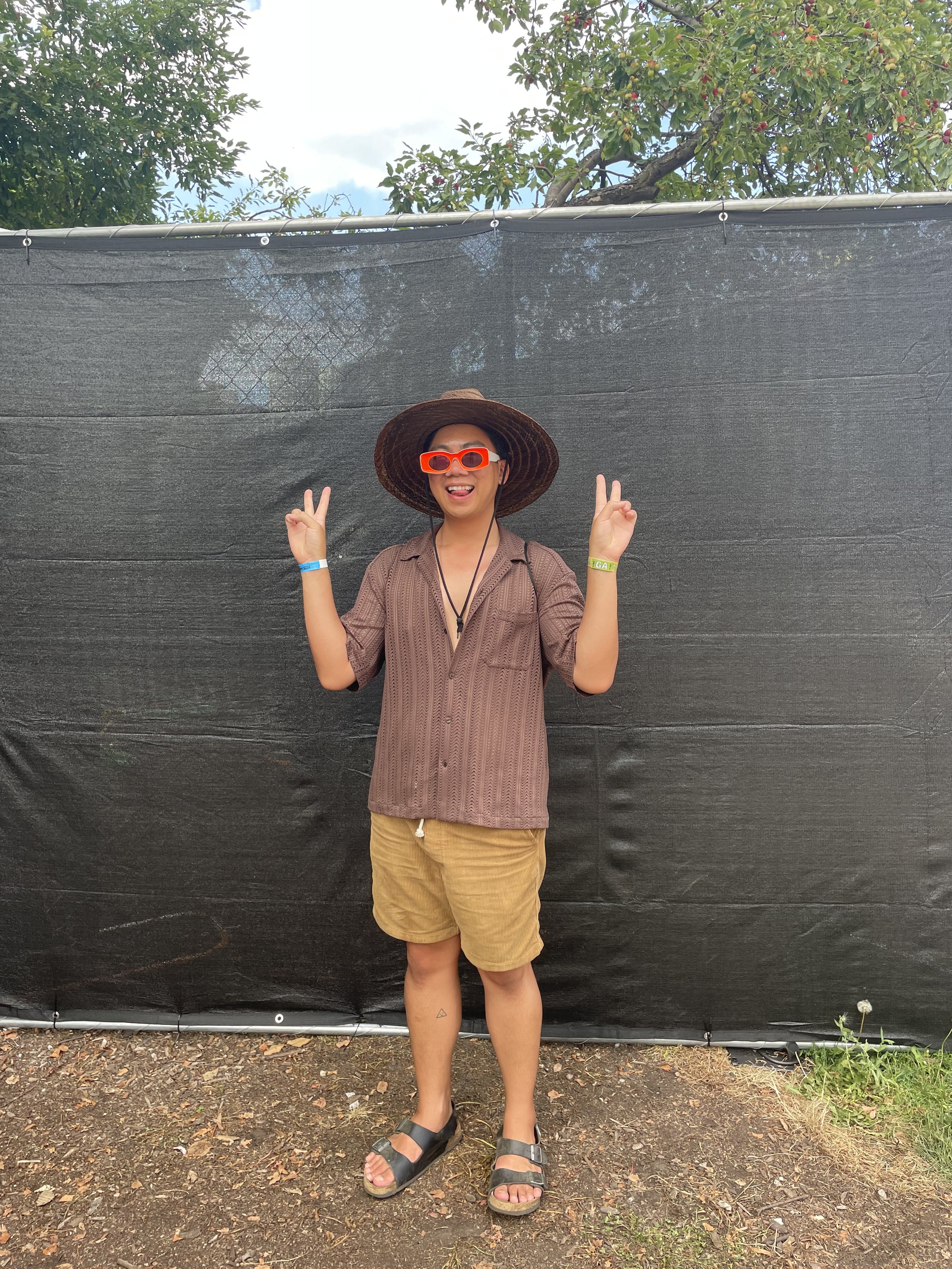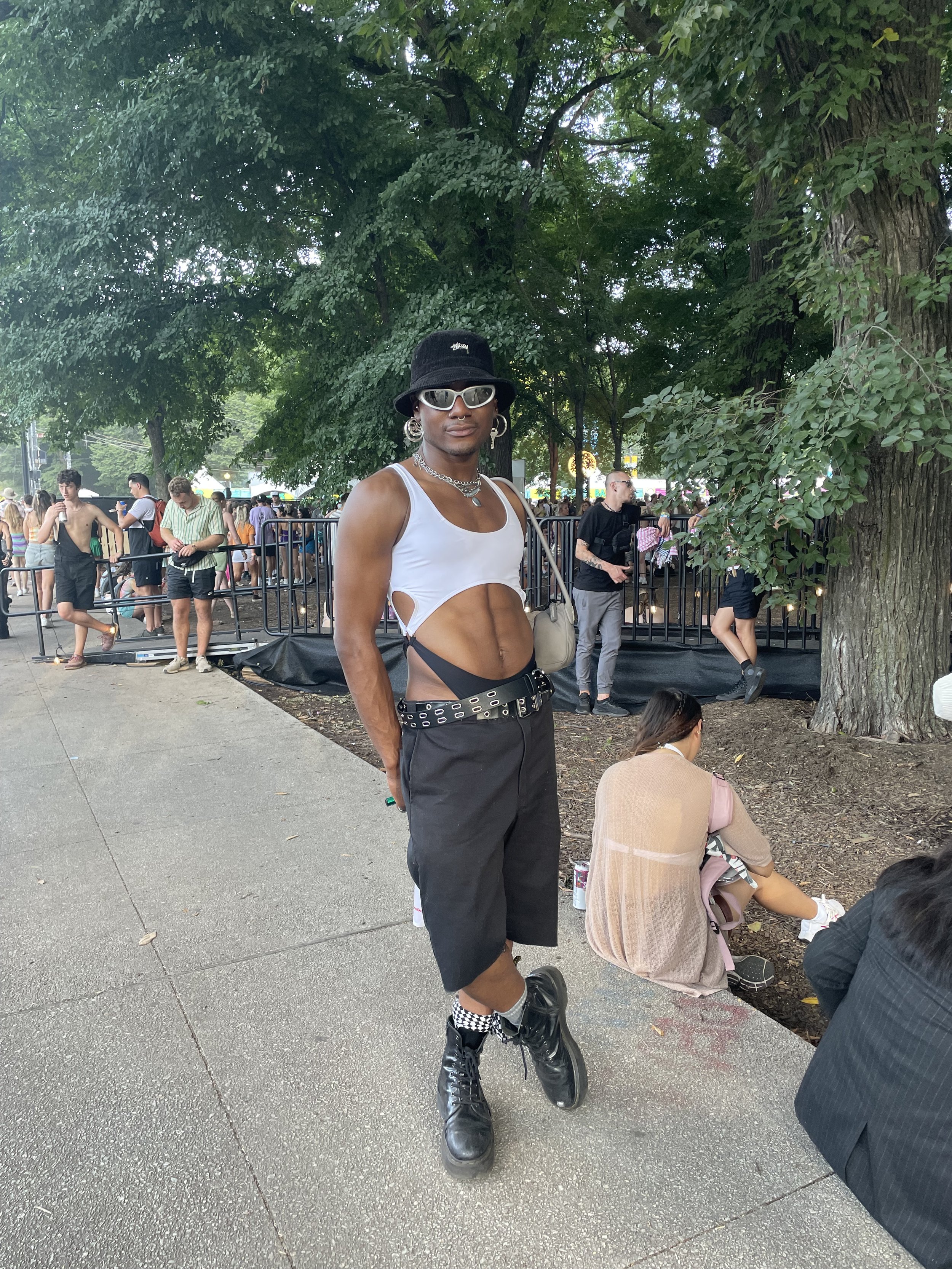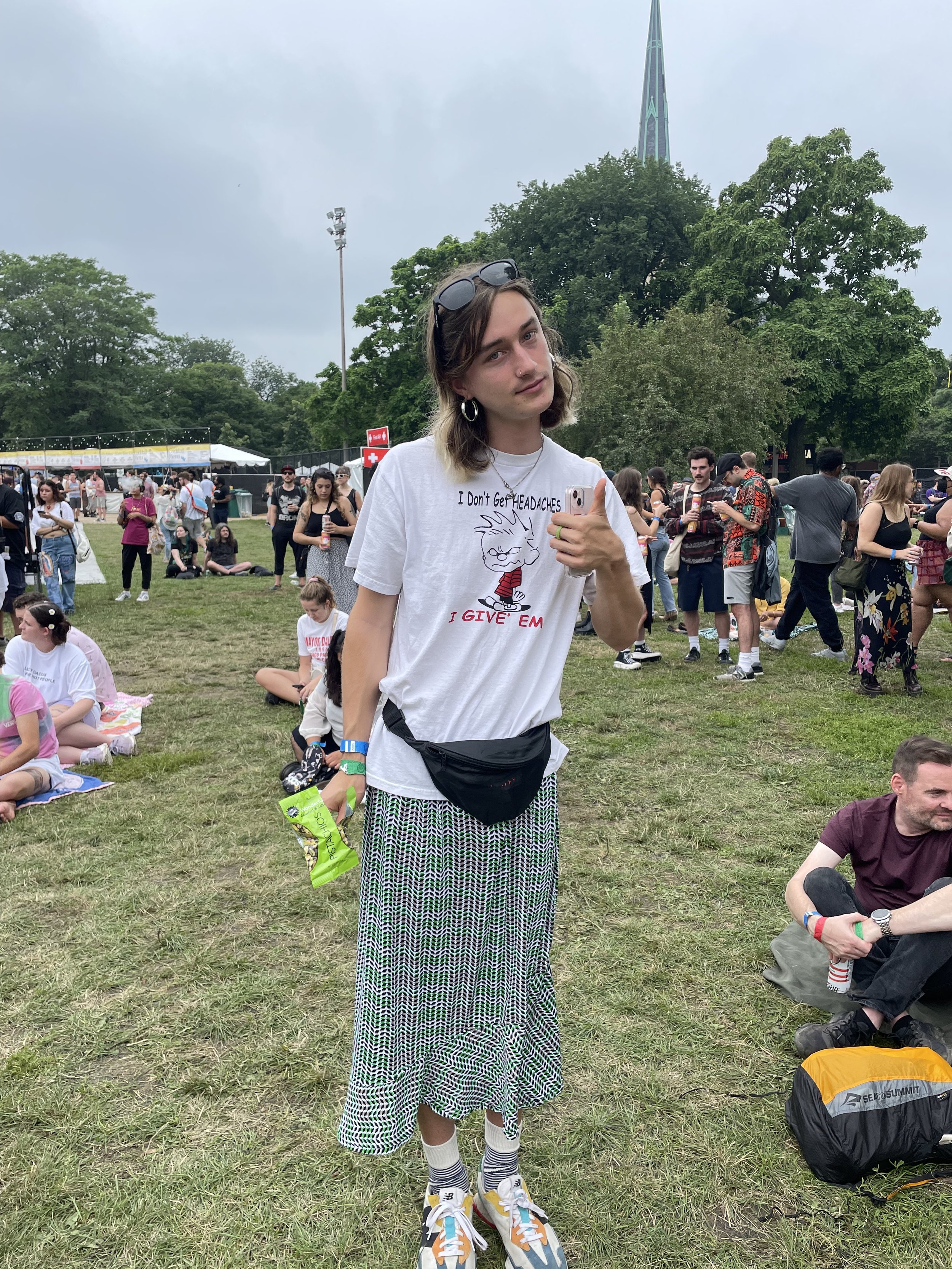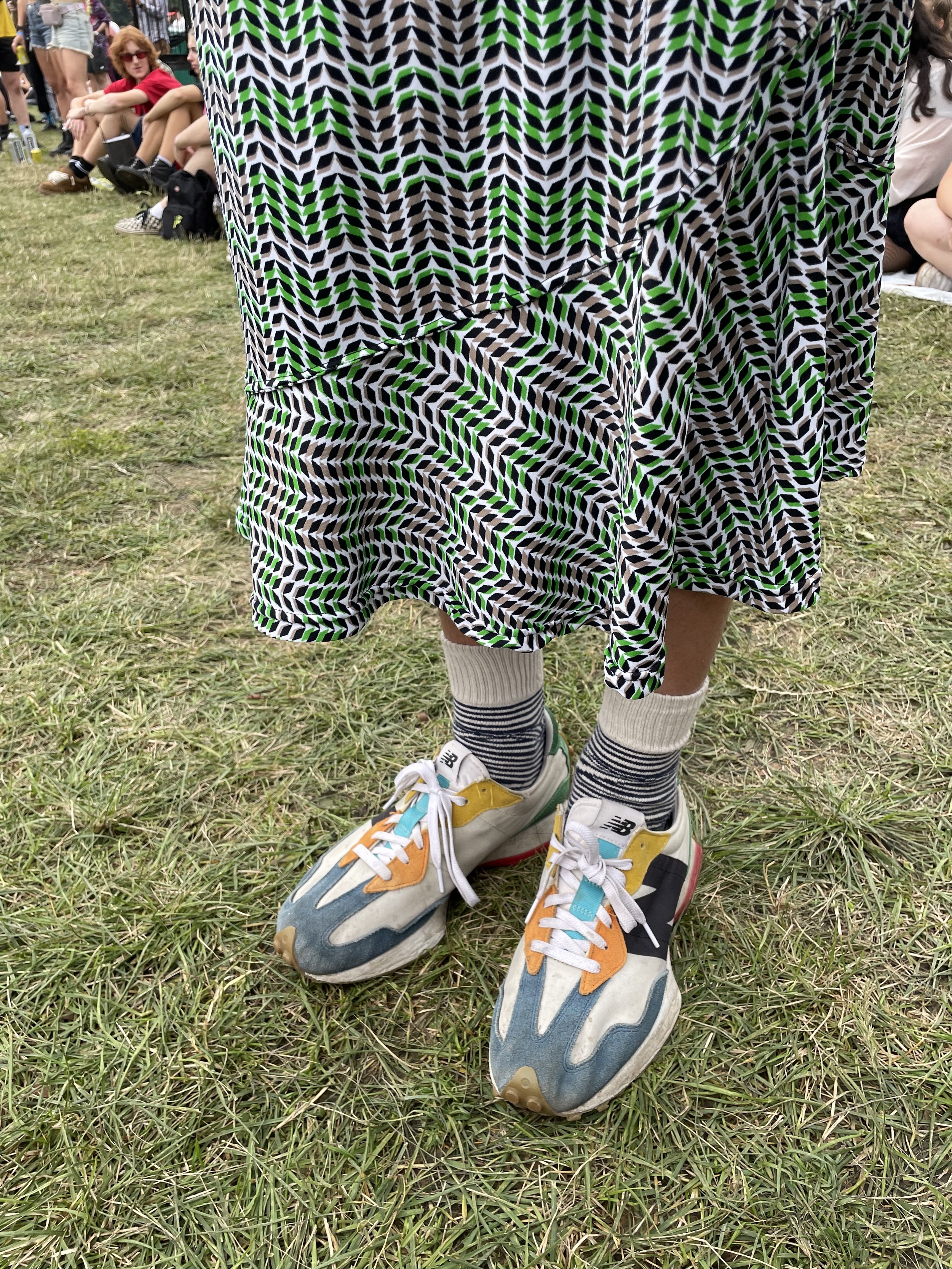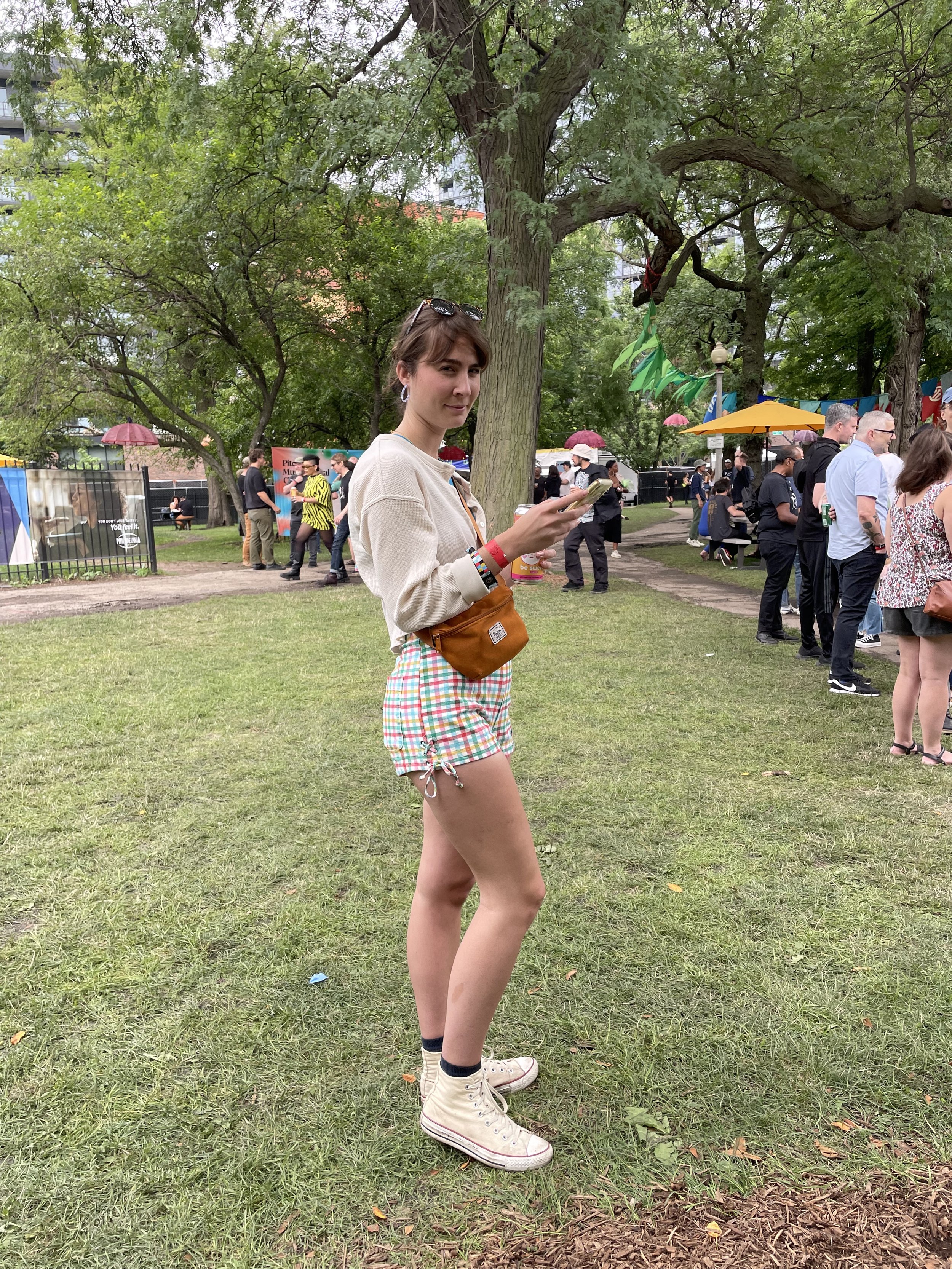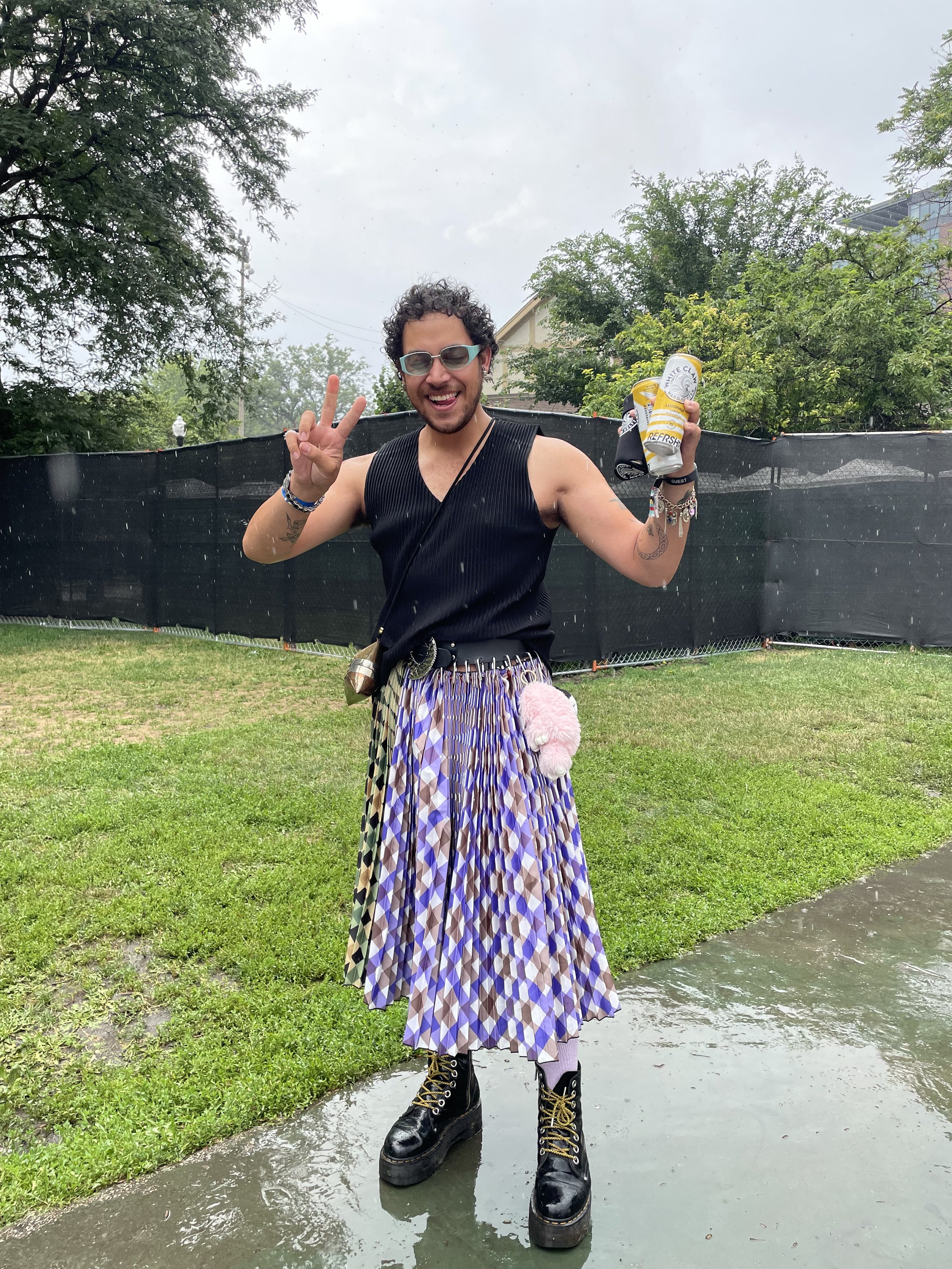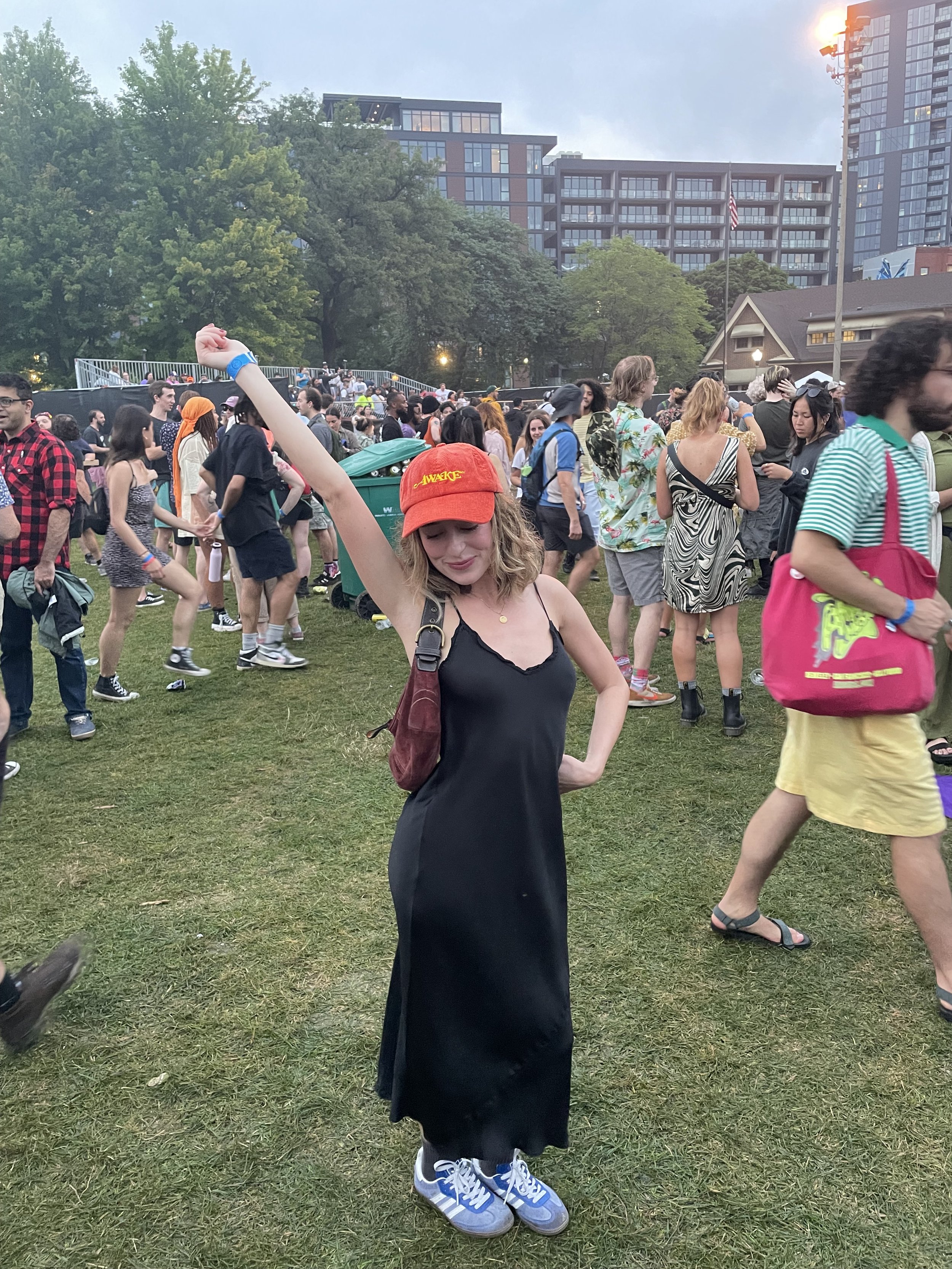Andersonville's Artist
I have four tattoos in total, and they all came from Sofija Kamasi. On my left arm reads “FAYE,” an ode to the singer Faye Webster. On my right arm lives three staggered stick-and-pokes: my childhood home, a book, and a slice of chocolate cake. I got them all within the last year on a massage table in her Andersonville apartment.
It’s been a year since I first stepped foot into Sofija’s apartment. Last week I drove up Ashland Avenue to pay her another visit, except this time there would be no tattoos. I wanted to know more about this artist whom I’ve come to appreciate so much. I wanted to better understand her work, in which I’ve put an inordinate amount of trust, evident in the fact that it’s poked into my skin forever.
The sun was setting as I ventured over, and the spring air was perfumed with scents of lilac and pollen. I had an appointment to write a literary portrait of Sofija—Andersonville’s artist. I arrived on her narrow block tucked away next to an old cemetery. Her apartment has become familiar in the span of a year. A grandiose courtyard sits in front of a brick building accompanied by a leaning tree, held captive by a black fence with a creaking entrance in serious need of WD-40.
In the three times I’ve been here, I’d ring her apartment and wait a few seconds until her voice came over the intercom, “coming down,” she’d say. In a matter of moments, she’d appear at the door with a smile on her face, another aspect of familiarity I’ve grown accustomed to. Last week, I rang her apartment and walked up, where she waited for me on the third floor. “I’m invading your space yet again,” I said. We both smiled and shared a hug.
To be in Sofija’s apartment is to know a welcomed environment. I no sooner took off my black leather jacket, sat down on the couch, and she made us some tea. The space is compact and exudes no lack of imagination. An impressive collection of records sit at a table wielding a Yamaha turntable and two speakers. The walls are covered with various pieces of art, ranging from sketches to prints and paintings. White shelving units are built into the walls to hold her various tattooing equipment, and next to the front door lies Sofija’s operating table, or rather, the table on which she creates. Rulers, scissors, pens, pencils, glue, and film cameras can be seen at the modest wooden table. A blue swing arm lamp illuminates this corner of her world as the sun continues to set through two windowpanes.
As I started taking photos of the living room, I was greeted by her new cat, Lucille. She nestled up to my legs with squinting eyes, and cute as she was, I knew my allergies were mere seconds away from acting up. Sofija returned from the kitchen with our tea and we sat down, myself on the couch, and her on the chair that she tattoos from. We talked off-record for about an hour before our interview, going over what we missed since my last visit on Valentine’s Day, where my girlfriend and I got tattoos. Sofija made a point of mentioning that she was nervous, saying that usually, she’s the one doing the interviews with people who come up to her apartment. I opened up Voice Memos on my iPhone, she turned down the music, I pressed play and the rest is what you’re about to read.
Across from me is 26-year-old Sofija Kamasi, a visual artist and the oldest daughter of a mother from Croatia and a Hungarian father who grew up in Serbia. She grew up in Novi Sad, the second-largest city in Serbia. Sofija notes that it’s a cultural hub with many young people and that the pace of the city is slow. It lives somewhere between a big city and a small city in feel and doesn’t have the same sense of patriotism as the rest of Serbia. She says her family was “decently poor,” her father coaching sports his whole life, and her mother working a series of jobs in kitchens, seamstressing, and eldercare. They managed to instill a sense of creativity in Sofija, sending her to drawing classes as early as six years old. She also made a point of enrolling in extracurricular drawing classes at school. “I was always making stuff,” Sofija said. “I still have drawings from when I was four, five, and six. That’s the thing I always enjoyed, and luckily my parents supported that and pushed it, even though I don’t know how they could’ve afforded it.”
I lean back on the couch with one leg crossed over the other as Lucille lies next to me. Sipping on the matcha latte poured into a mug she bought in Serbia, my eyes go back and forth from Sofija’s to my phone, making sure that her voice is being picked up. As I listen back to it now, I can hear the faint sound of Men I Trust playing in the background.
She went on to enroll in the School of Design Bogdan Šuput, an arts high school in Novi Sad. Then came The Academy of Arts at the University of Novi Sad where she studied graphic design and left with a degree in applied arts, which was free for students with good grades. “I feel very grateful, especially after moving here and seeing what kind of debt people get into for doing any kind of school,” Sofija said. “A lot of things don’t work in Serbia, but at least education and health care are more manageable than they are here.” Another thing that wouldn’t work for Sofija is continuing her art practice back home. “I don’t feel like I could’ve kept doing what I wanted to do there, just because people don’t have the money to support art in the way they do here.”
I recall a moment last summer at the Palmer Square Art Fair where Sofija had a table set up. I was in search of a belated Father’s Day gift and saw that she had created ceramic cups. I landed on a chalice that would suit my dad’s chianti drinking. While I looked over the ceramics, the journalist in me snooped on the conversations being held between Sofija and potential buyers. It seemed that everyone who stopped by left with something; if they didn’t, they shared a pleasant conversation with her. The city of Chicago and those with a keen sense of taste were without reservation when it came to Sofija Kamasi and her art.
Before coming to Chicago in May of 2019, she had never been to the United States. Through a work and travel program, she was to be here for five months. Some family and friends in Chicago helped her find an apartment in Lakeview, and she worked at the Ghirardelli on Michigan Avenue, a bar, and a sandwich shop.“I didn’t put much thought into it, and I never thought I’d be building my life here,” Sofija said. Then she met her husband Noah. They met on Tinder and had a picnic date on the lakefront. About three weeks from their first date, they decided to move in together to an apartment in Boystown, as both of them were experiencing changes to their leases. After living together for two months, the couple got married in September 2019 and set their sights on Andersonville.
“Our stuff was in Noah’s car packed to the brim while we were trying to find an apartment,” Sofija said. Through an arduous apartment hunt, the couple ended up staying at a friend's apartment before settling into Andersonville in November 2019. Sofija wanted to be in close proximity to the lake, as it allowed her creative freedom. “It brings me serenity,” she said. “I like creating and drawing there. It’s a nice home base in a way, and being in such a huge city, having the lake is a little break. I don’t think I’m built for a multimillion-person city, it’s all too much for me, so the lake helps.”
I’m taking Sofija’s portrait as she sits at her kitchen table. She turns around and faces the large single-hung window that looks out to a graveyard. Through the limbs of reborn trees, I see the John Hancock and Sears Tower. A calendar is pinned beside the window surrounded by tasteful clutter. I’ve taken over 60 photographs at this point, but none of them were able to capture the artist and her space how I’d have liked them to. It’s no fault of the artists of course, but the writer. She begins peeling potatoes over the trash can in preparation for a gnocchi dish.
4,939 miles live between Novi Sad and Andersonville. “This is where we built our life, we had nothing coming into this,” Sofija said. Just four months after moving to Andersonville, the pandemic came. She took a part-time job as a waitress in a bar, granting her enough money to afford rent, and enough time to begin her art practice. “I built up my business in the year of being in lockdown,” she said. Having been a good student, she relates the meticulous steps of starting a business to studying subjects you don’t like. “The first thing I did before I ever started making stuff was researching taxes. I had no idea how taxes worked, especially for self-employed people. Then I acquired a business license and set up my website. I did this all before I started selling anything because I wanted to have a base so I can feel comfortable doing this,” Sofija said. She’s always taken care of her finances, tracking everything she spends on a daily basis, “It’s a big thing, doing your bookkeeping,” she said. “Doing art is like a third of the job.”
It’s suffice to say that Sofija is a businesswoman and an artist. The only time she didn’t feel like an artist was when she was working service jobs. “I lost a certain amount of confidence whenever I would need to tell people, ‘Oh, I’m a waitress,’ because people put service jobs down a bit.” Beyond that period of her life, she’s identified as an artist, saying that “it’s ever-changing, that’s why I keep the title visual because I don’t think I’ll ever get into music.”
With the pandemic forcing people to stay inside, Sofija devoted all of her free time to drawing and learning new mediums. She returned to printmaking—something she studied throughout school. She picked up jewelry making, playing with polymer clay, bead making, and sewing.
“I feel like everything comes from my drawing practice,” Sofija said. She doesn’t monetize the drawings, but rather, the objects and creations that spawn from them. “I turn it into tattoos or quilts and other things that I can market.” When she’s not finding inspiration from her drawings, she will sew and find a pattern that she thinks will work as a tattoo. She’ll find that same inspiration when making a beaded necklace. “Everything kind of feeds into each other,” Sofija said. There are times when drawing becomes intimidating to her since the process is “more abstract.” When she draws, there is no beginning and end; if she wants to sit down and make two bags, it’s more quantifiable. Nevertheless, she has found her sense of style through the trials and tribulations of drawing on paper with a pen or pencil, allowing her to make mistakes and learn from them.
You might have stumbled upon one of Sofija’s stick-and-poke tattoos via Instagram, or perhaps in a bar or on the street. Scrolling through her account is a journey through art on flesh. The designs vary from customs to flash, her style coming through each time. But this is merely one of Sofija’s many mediums. She picked it up in March 2020, starting out by tattooing herself, friends, and family. “I had no idea it was going to be my job later,” Sofija said. A year prior, she got a stick and poke done on her hand in someone's house, and she says “After having that experience, it clicked in my mind that I wanted to tattoo people in my home because it seemed more manageable and easier to get into.”
Sofija jumped headfirst into the world of stick-and-poke tattoos. “I have everyone who shares reels on Instagram to thank,” Sofija said. “I was seeing what needles they used, and if they were posting any questions and answers, I’d follow those and gather all the information I could.” Sofija has copious tattoos and says that over time, meeting other artists and watching their process has helped her own. “I’m always going to be learning, that’s the nature of the work.”
She kept her part-time job as a waitress while starting her tattooing journey and in the summer of 2021, she committed fully to her craft. “More and more people started reaching out about tattoos, I think I was doing about 10 appointments a month,” Sofija said. “I also picked up a couple of art markets that summer, so I managed to save enough money to know that I can drop my part-time job.” She says that the transition to being a full-time artist was an easy one, as she was prepared to go back to working at the bar if things hadn’t gone smoothly, “I’m fine to work on stuff that’s not creative, it’s just that I’m lucky I don’t have to.”
In an age consumed by indifference, and in the low light of Sofija’s living room, I’m ever more aware of what it looks like to bet on yourself. If there’s one single thing I leave Andersonville with tonight, it’s an understanding that luck has played a role in Sofija Kamasi’s life only to an extent. The rest is a tireless conviction that what she makes, and the ideas she puts into the world resonate far and wide beyond the confines of this space, and of her mind.
She sees six to eight people on any given week that will come through her apartment for tattoos. “It’s very hard for me to step back and realize how big of a moment getting a tattoo is for people. Maybe it’s a good thing I don’t think about it because I’d get too self-conscious,” Sofija said. These days, she’s trying her best to keep her booking schedule to a minimum, “I just really want to be present for everybody, and I come across so many people from so many different professions that I’d otherwise never come across, but I don’t like putting all that pressure on the importance of the day.” As much as she cherishes her interactions with strangers, at her core she’s introverted. “I hope that one day I will have the privilege of being locked away somewhere in a forest for a month and see what truly comes out of me,” Sofija said.
Instagram is both good and bad for her. When she was starting out, she’d post everything she made every day. She decided that using one single account would be best for her, “this is me, this is what I do,” Sofija said. Once the platform began introducing the stories option, she’d post personal things there, as they wouldn’t have to be on the grid. “If it wasn’t for my work, I probably wouldn’t be on Instagram, life would be nicer without it,” Sofija said. The anxiety started when she recognized a pattern of wanting to take pictures just to post them on Instagram. From there, she went through the ups and downs of growing her profile. “There was a period of time where Instagram’s algorithm was so crazy and I wasn’t getting any interaction,” Sofija said. “I don’t like following trends, I’m not going to be posting reels.” As she’s gained more followers, she’s noticed that Instagram is pushing her posts to a larger audience via the Explore page. Now, she’ll only post once or twice a week through the app's scheduling system. “I scroll more than I want to, but recently I’ve not been bringing my phone to my bedroom and it’s been working well, I read way more books than I have in previous years,” Sofija said. This felt like an opportune time to present Sofija with my first book of poetry.
The sun has now completely set and my recording app hits the two-hour mark. Sofija Kamasi sits tall in her tattooing chair, seemingly ready for another hour of questions. We talk briefly about her life outside of art, and even how she’s considered career paths like sustainability and wellness. “I think there’s a lot of things I could take on if I didn’t have a creative practice, but I think all these things require a certain amount of creativity and expression,” Sofija said. She enjoys traveling, especially alone, cooking, reading, cycling, and running. “It’s necessary to step away, it’s what feeds me and keeps the flow going.”
She has arrived at a place of stability, financially speaking and creatively. The next step is finding a studio space to work out of. She hopes things will continue as they are currently, and says that in the next few years, she might go to a new city or begin a new lifestyle. “For now, I just want to make stuff, tattoo people, and meet people,” Sofija said. “If it stays like this forever, I’m more than happy with where I’m at right now, I’m not rushing or pushing for anything more.”











